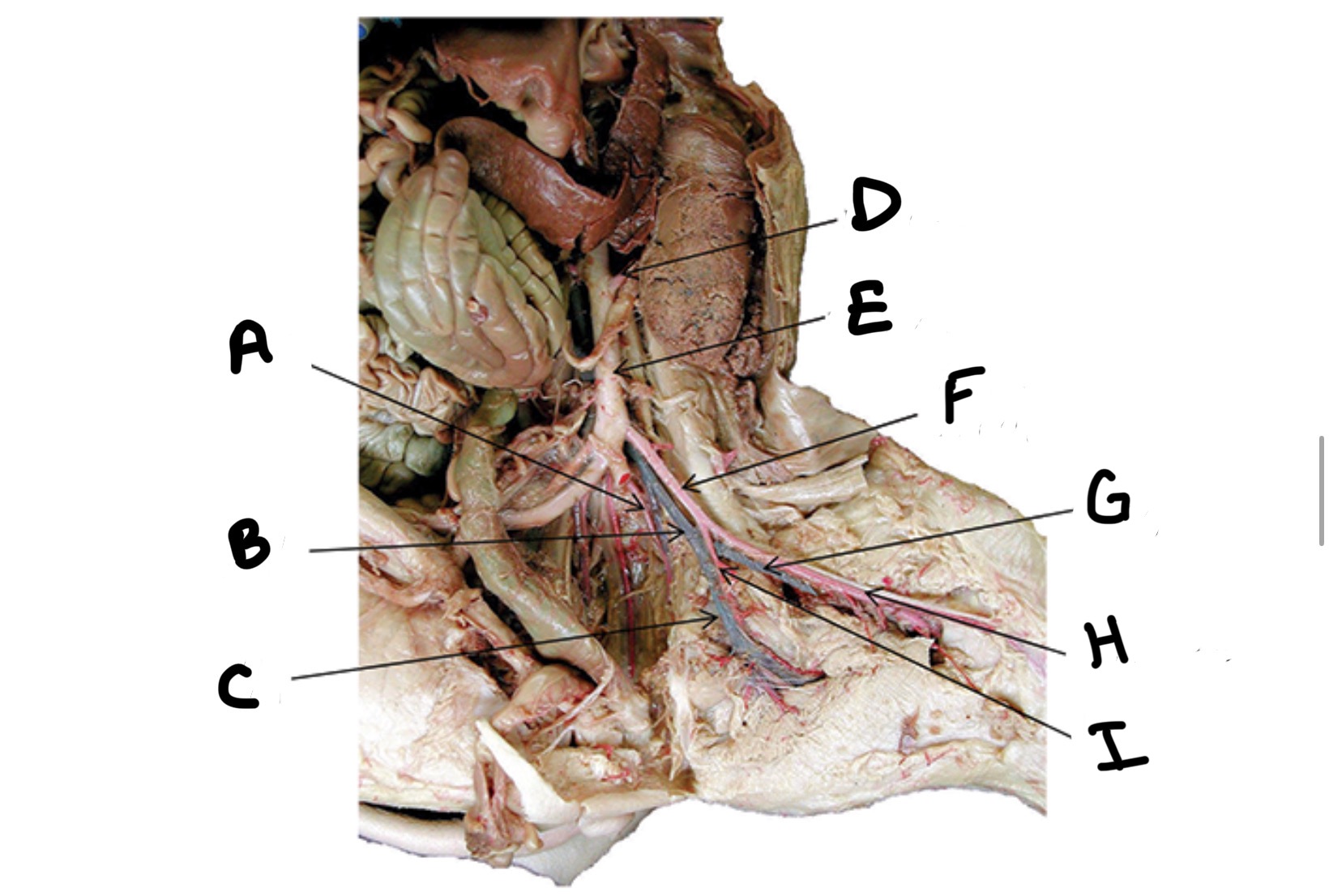Lab 13: fetal pig dissection 2
1/76
There's no tags or description
Looks like no tags are added yet.
Name | Mastery | Learn | Test | Matching | Spaced |
|---|
No study sessions yet.
77 Terms
Precava
Carries unoxygenated blood from the head, neck, and forelimbs, to the right atrium.
Brachiocephalic veins
Carry blood from the cephalic, subclavian, and jugulars to the precava.
Internal jugular vein
The first set of vessels to emerge from the cranial vena cava, medially. These veins carry blood from the head to the brachiocephalic veins. They are located on either side of the trachea.
External jugular veins
The second set of vessels to emerge from the cranial vena cava, medially. Carry blood from the head to the brachiocephalic veins.
Subscapular veins
The third set of veins medially in the neck region. They carry blood from the region of the arm pit and join with the axillary vein to form the subclavian vein.
Subclavian veins
The fourth set of vessels vessels medially in the neck region. These veins carry blood from the subscapular veins and axillary veins to the brachiocephalic veins.
Axillary veins
These veins carry blood from the forelimbs and join with the subscapular veins to form the subclavian vein
Postcava
Carries unoxygenated blood from the posterior portion of the body to the right atrium.
Hepatic portal vein
A large vein located between the stomach and liver. It carries blood from the stomach, spleen, pancreas, and intestines to the liver.
Umbilical vein
This vein carries blood containing oxygen and nutrients from the placenta to the fetus.
Renal veins
These veins carry blood from the kidneys to the caudal vena cava.
Common iliac veins
These veins carry blood from the external and internal iliac veins to the caudal vena cava.
Internal iliac veins
These veins carry blood from the pelvis to the common iliac veins.
External iliac veins
These veins carry blood from the femoral and deep femoral veins to the common iliac veins.
Femoral veins
These veins carry blood from the thigh and lower hind limb to the external iliac veins.
Deep femoral veins
These veins carry blood from the thigh to the external iliac veins.
Aortic arch
The artery that leaves the left ventricle and gives rise to the brachiocephalic trunk, left subclavian artery, and dorsal aorta.
Left subclavian artery
The second large artery arising from the aortic arch. It carries blood to the left forelimb.
Brachiocephalic trunk
The first large artery arising from the aortic arch. It carries oxygenated blood to the neck, head, and right forelimb.
Right subclavian artery
The second artery to arise from the brachiocephalic trunk. It supplies blood to the cervical vertebrae and right forelimb.
Carotid trunk
The first vessel to arise from the brachiocephalic trunk, medially. It carries blood anteriorly towards the neck and head.
Common carotid arteries
The carotid trunk splits into the right and left common carotids.
External carotid artery
Medial branches of common carotid arteries. They carry blood to the area around the masseter muscle and chin.
Internal carotid arteries
Lateral branches of common carotid arteries. They carry blood to the brain.
Axillary arteries
Continuation of the subclavian arteries. They carry blood to the armpit, shoulder, and forelimb.
Dorsal aorta
Lies on the mid-dorsal wall, measures the length of the abdominal cavity. It carries blood to the entire posterior portion of the body.
Celiac trunk
First artery to branch off of the dorsal aorta, posterior to the diaphragm. It carries blood to the stomach, pancreas, and spleen.
Cranial mesenteric artery
The second artery to branch off of the aorta, posterior to the diaphragm. It carries blood to most of the small intestine.
Renal arteries
Branch off of the aorta and carry blood to the kidneys.
Caudal mesenteric artery
This artery branches off of the ventral surface of the aorta before it splits into the umbilical arteries. It carries blood to the large intestine and colon.
Umbilical arteries
The terminal end of the aorta splits into these two arteries. They enter the umbilical cord and carry blood to the placenta.
Internal iliac arteries
These arteries branch dorsally off of the aorta, immediately anterior to the umbilical arteries. They carry blood to the pelvic region.
External iliac arteries
These arteries branch off the aorta immediately anterior to the umbilical arteries. They carry blood to the thighs and hind limbs.
Femoral arteries
These arteries are one of two branches of the external iliac arteries. They carry blood to the thigh and lower hind limb.
Deep femoral arteries
These arteries are one of two branches of the external iliac arteries. They carry blood to the back of the thigh.
Internal Jugular vein
What is A
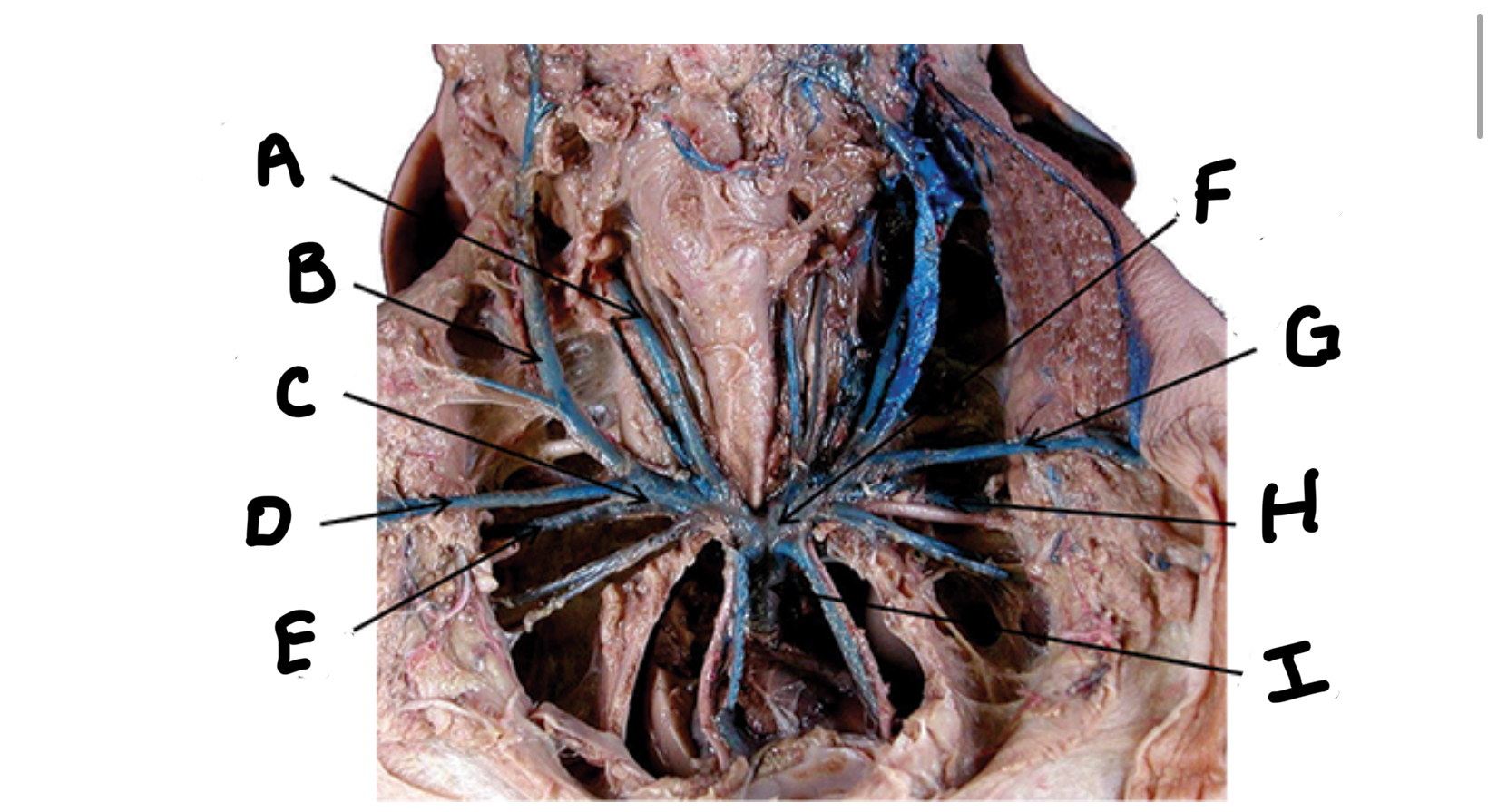
External juglar veins
What is B
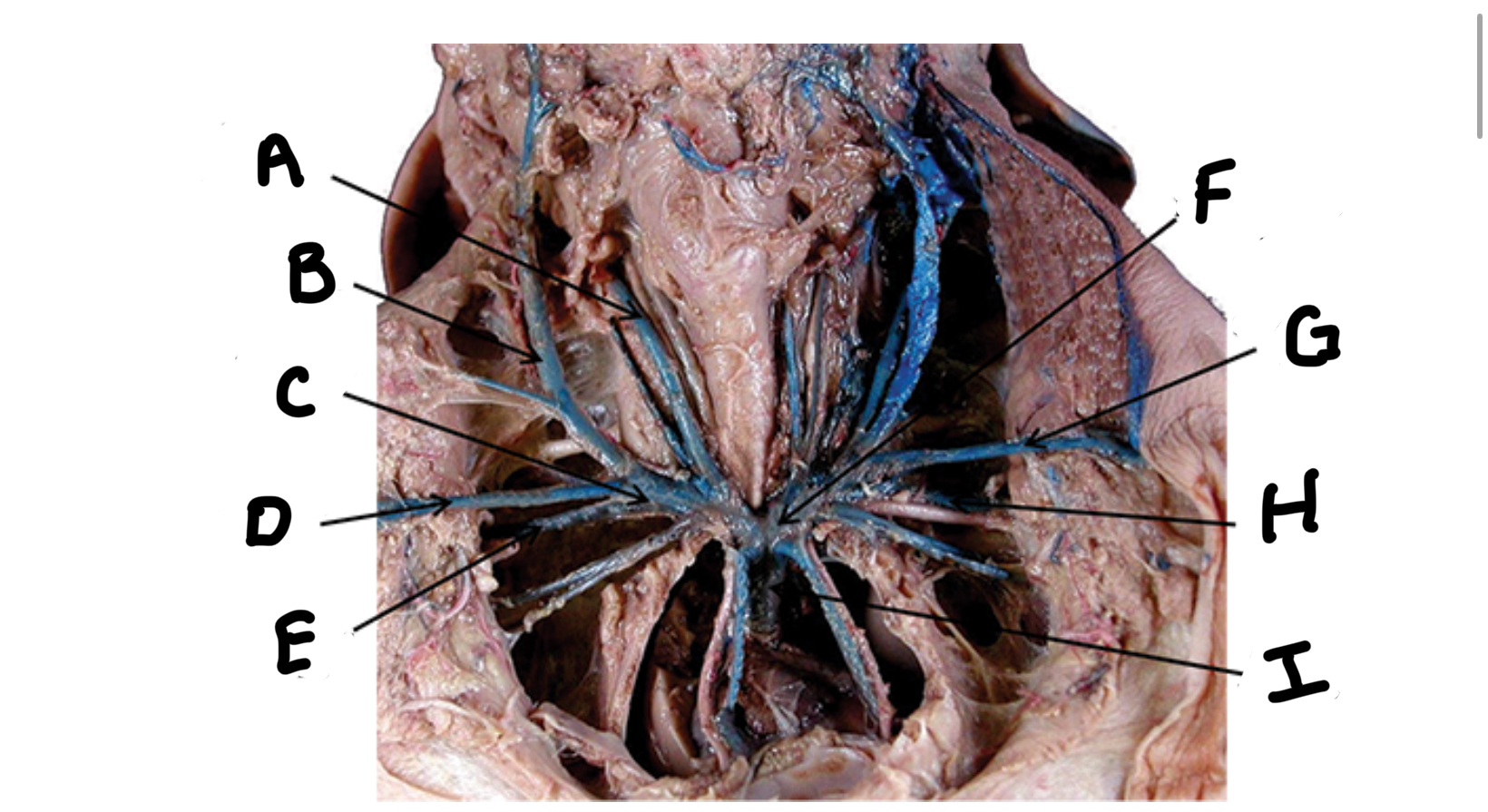
Subclavian veins
What is C
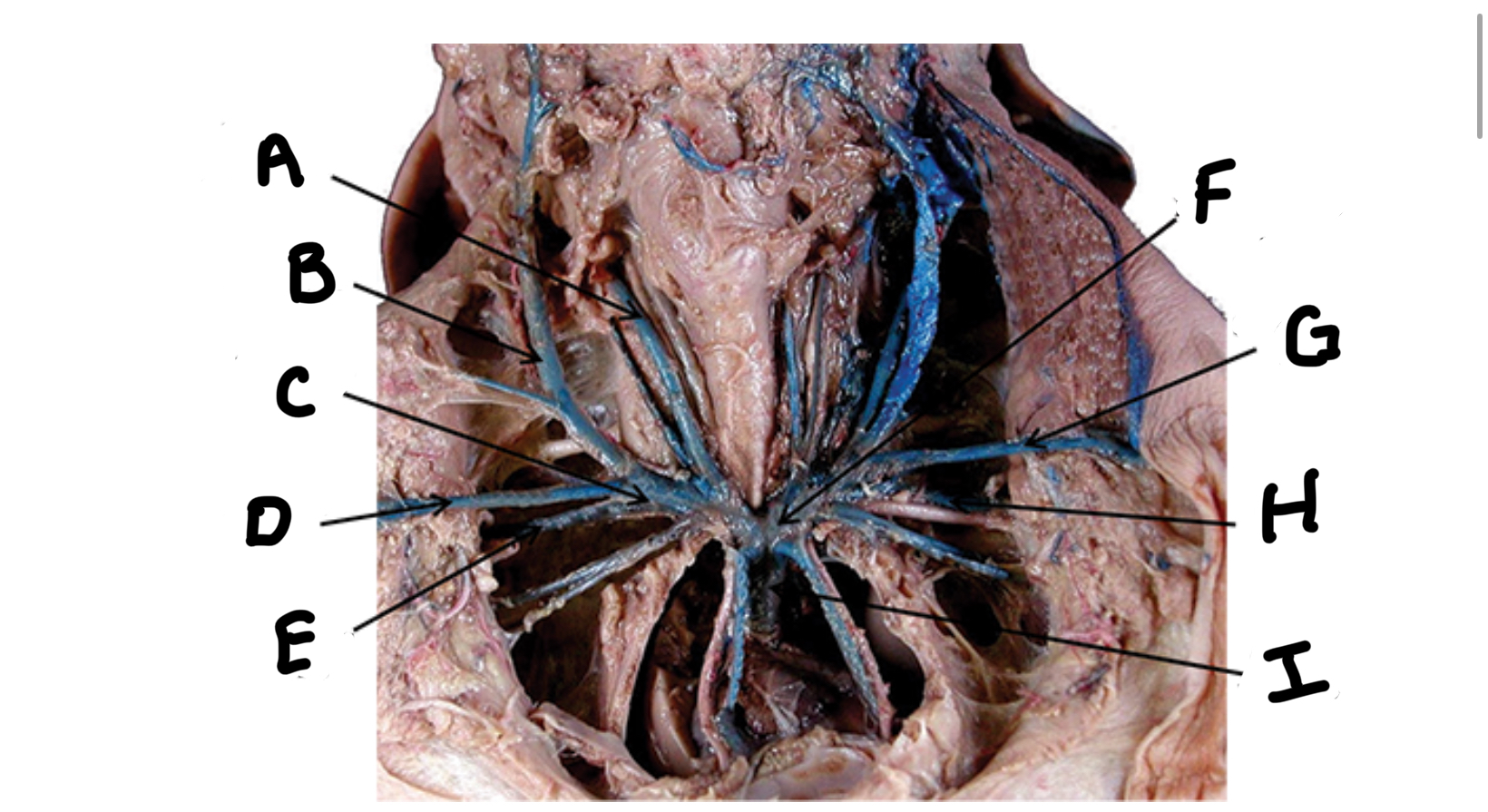
Subscapular veins
What is D

Axillary Vein
What is E
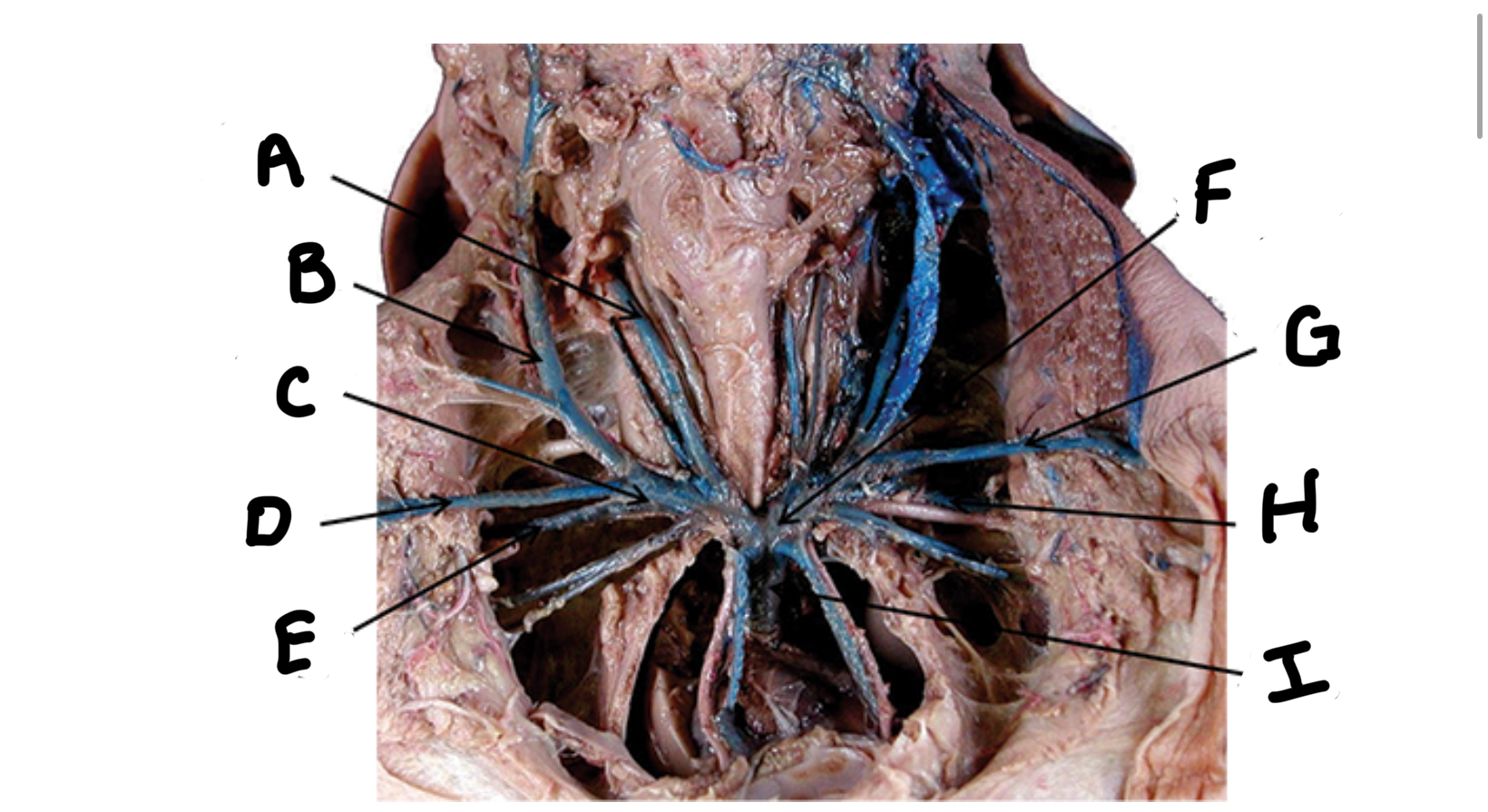
Brachiocephalic vein
What is F
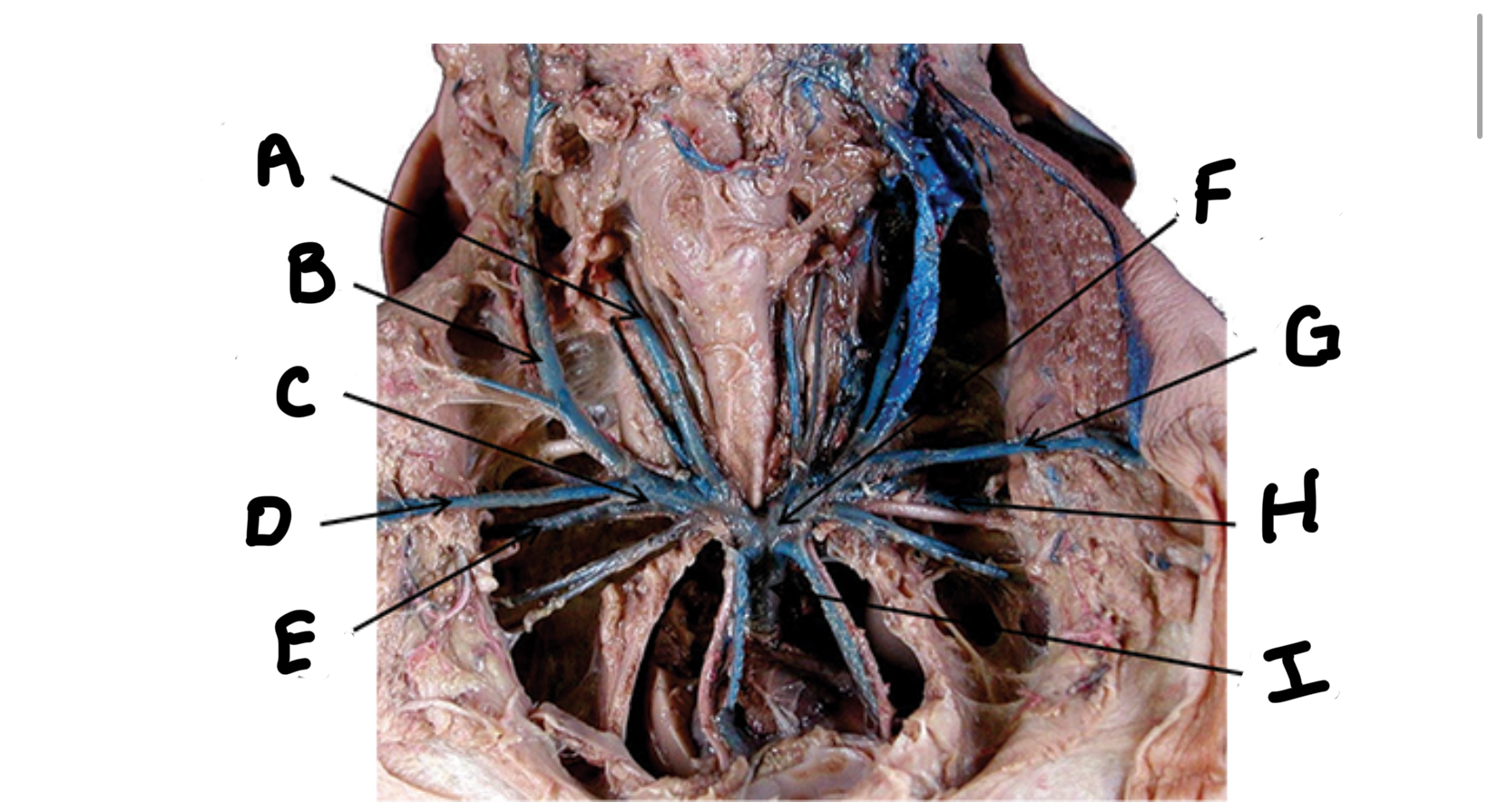
Subscapular vein
What is G
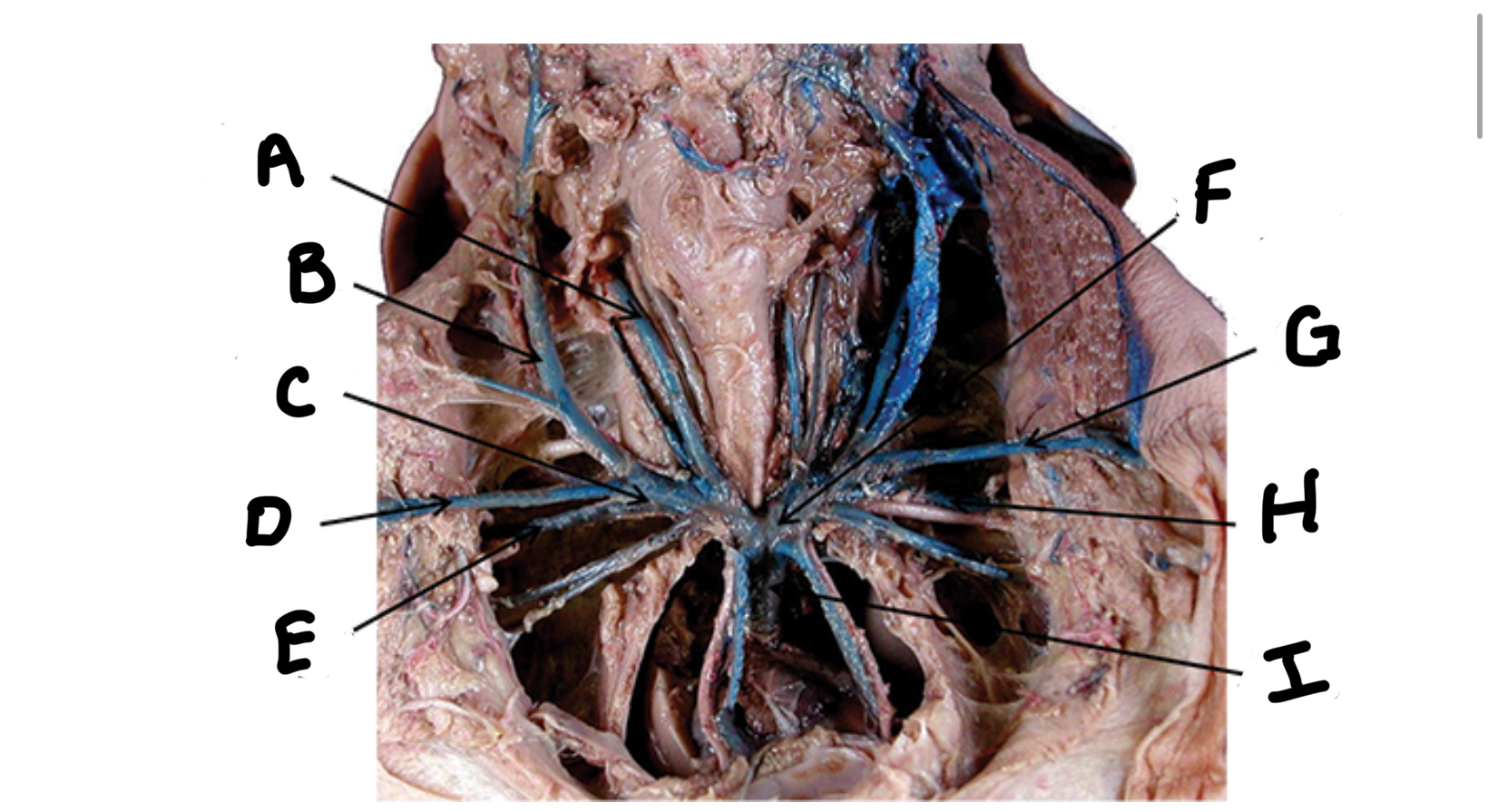
Axillary vein
What is H

Cranial vena cava
What is I

Caudal vena cava
What is A
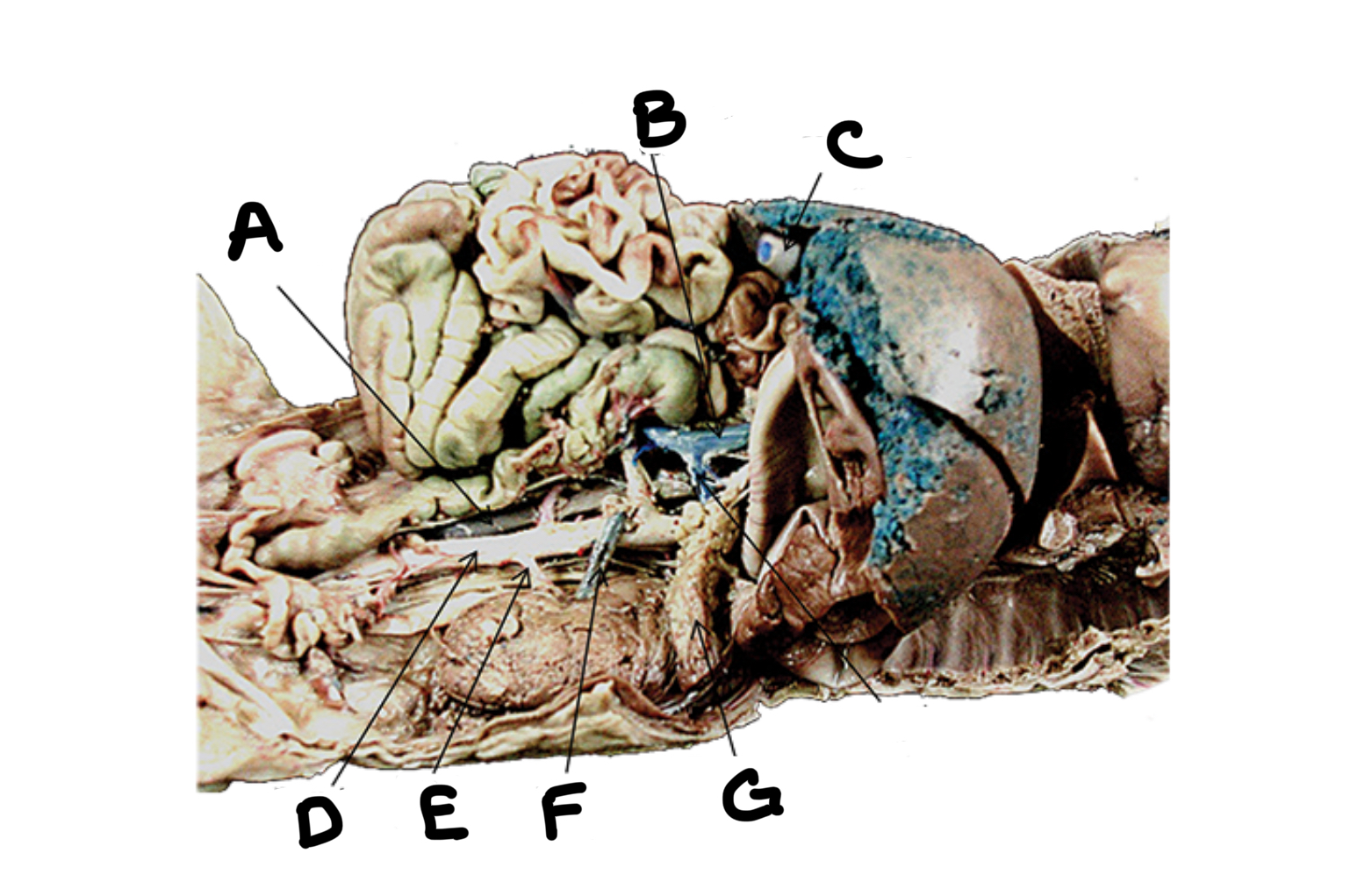
Hepatic portal vein
What is B
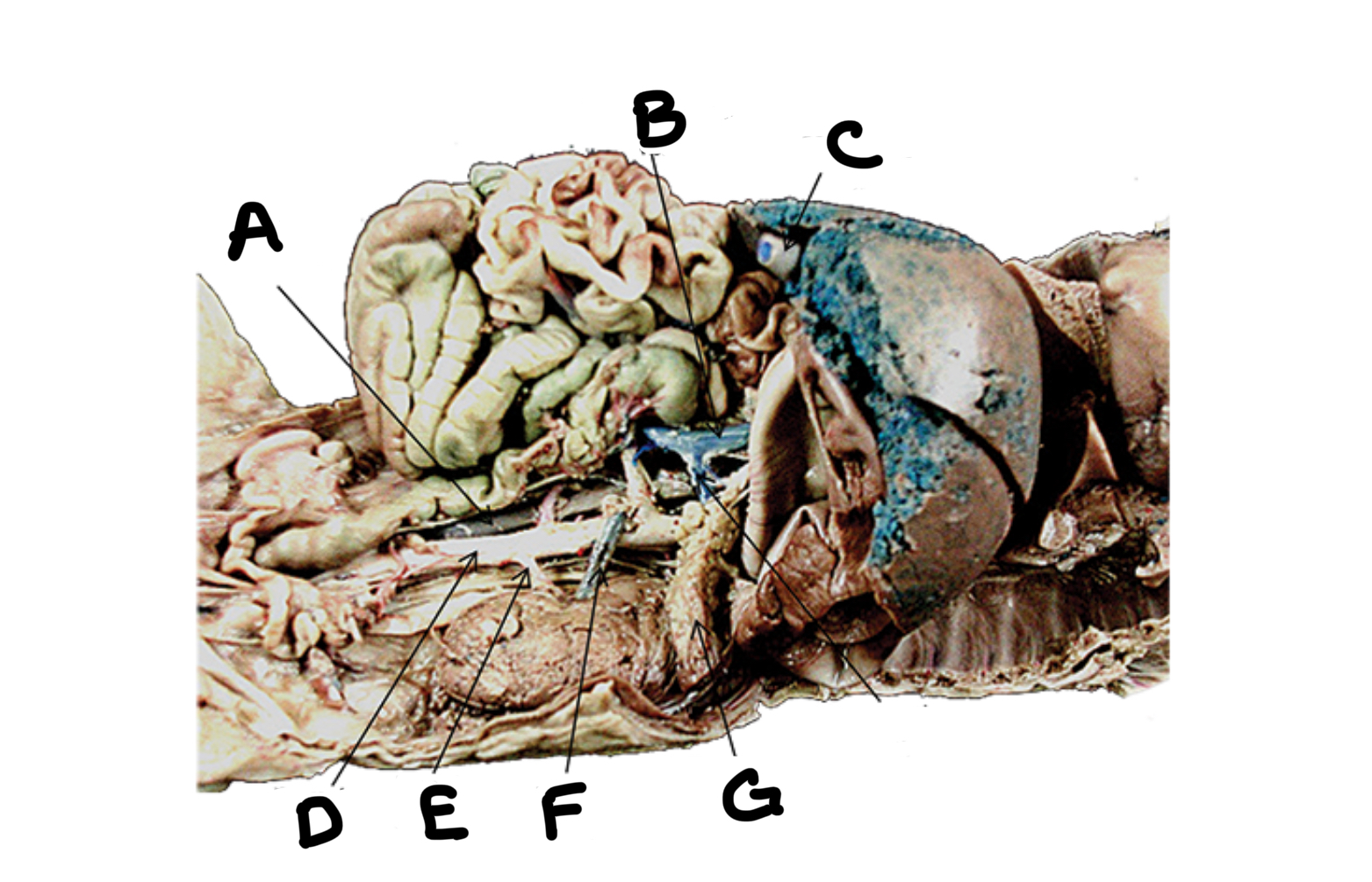
Umbilical vein
What is C
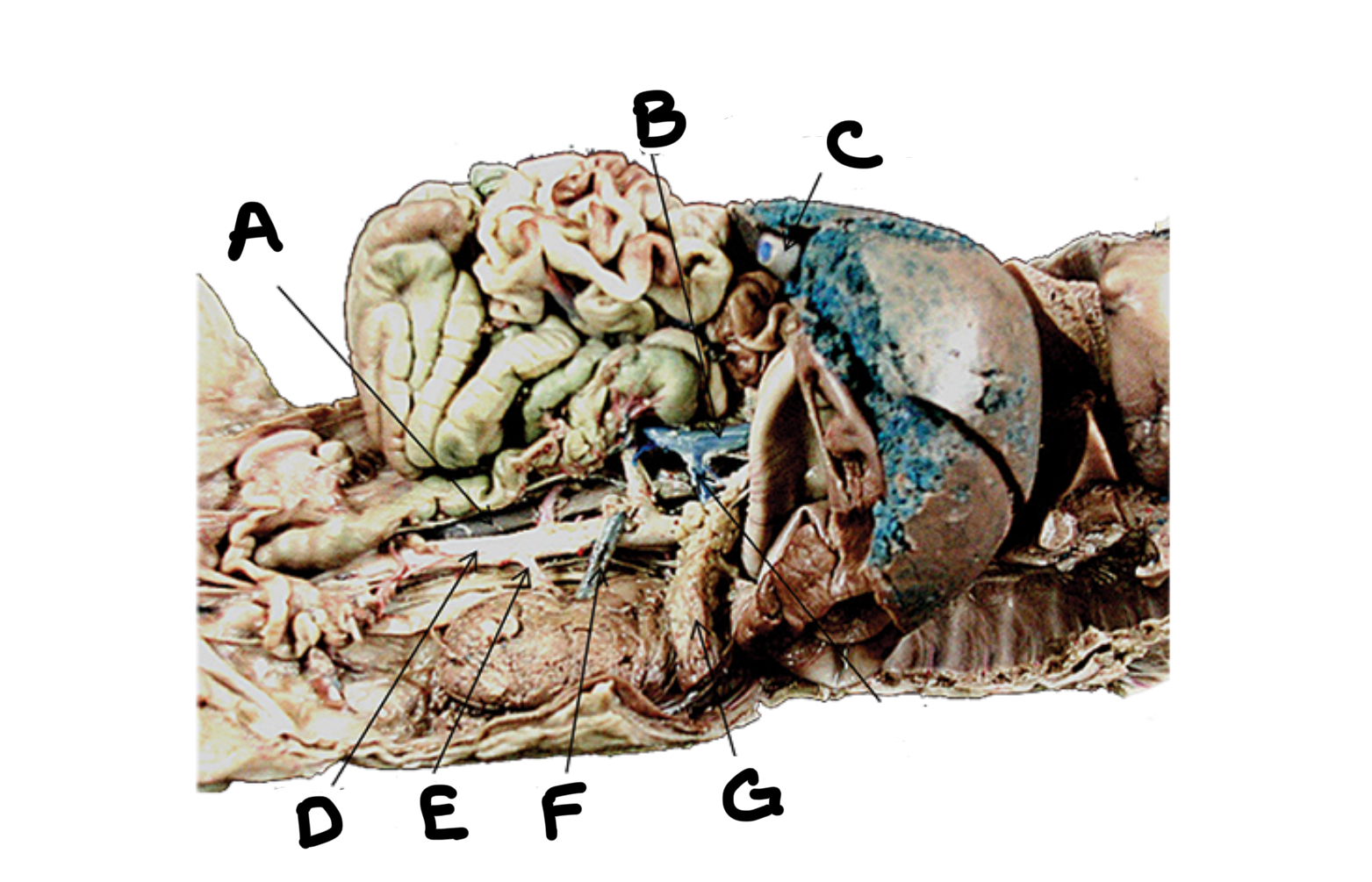
Dorsal aorta
What is D
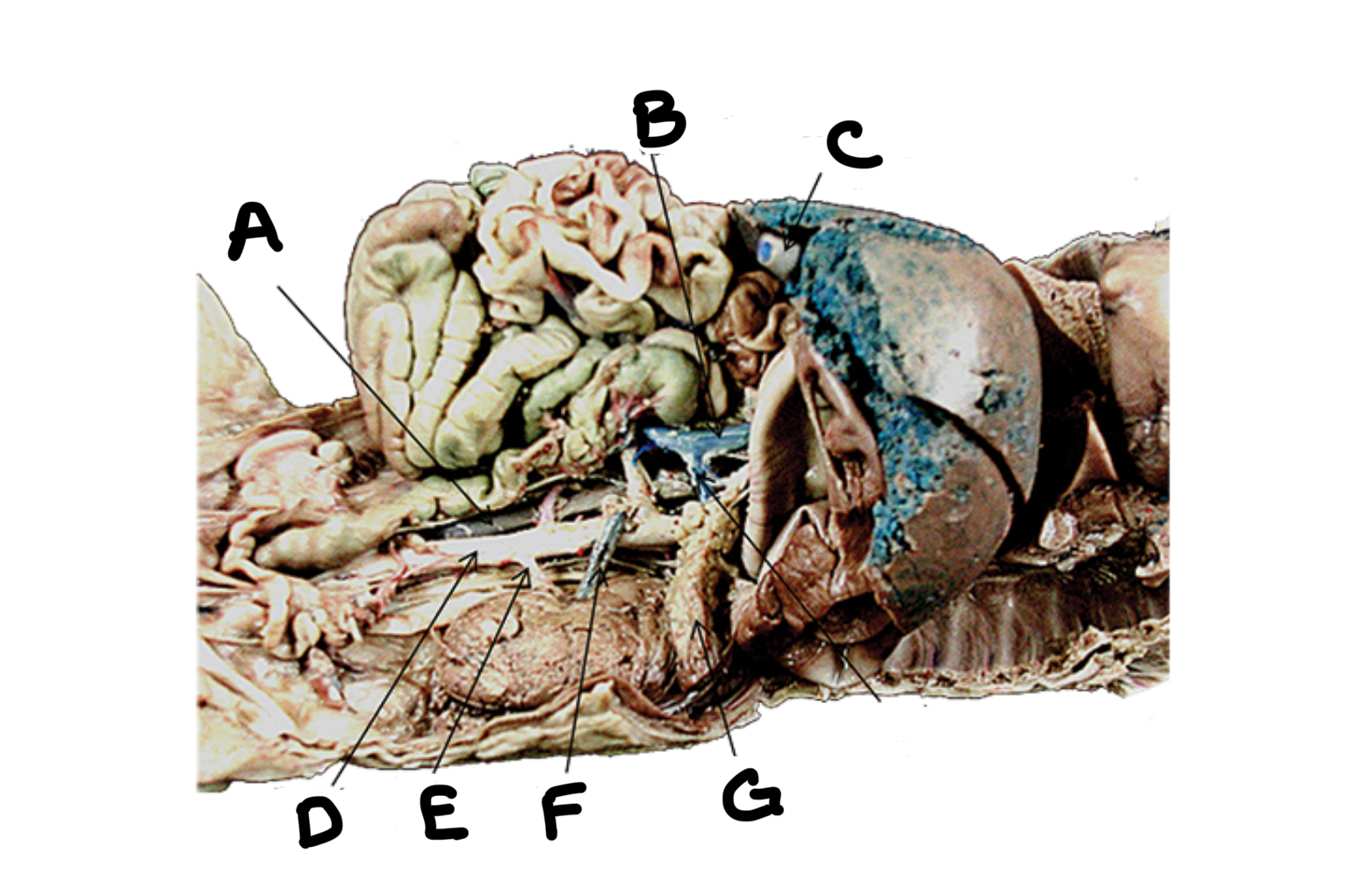
Renal Artery
What is E

Renal Vein
What is F
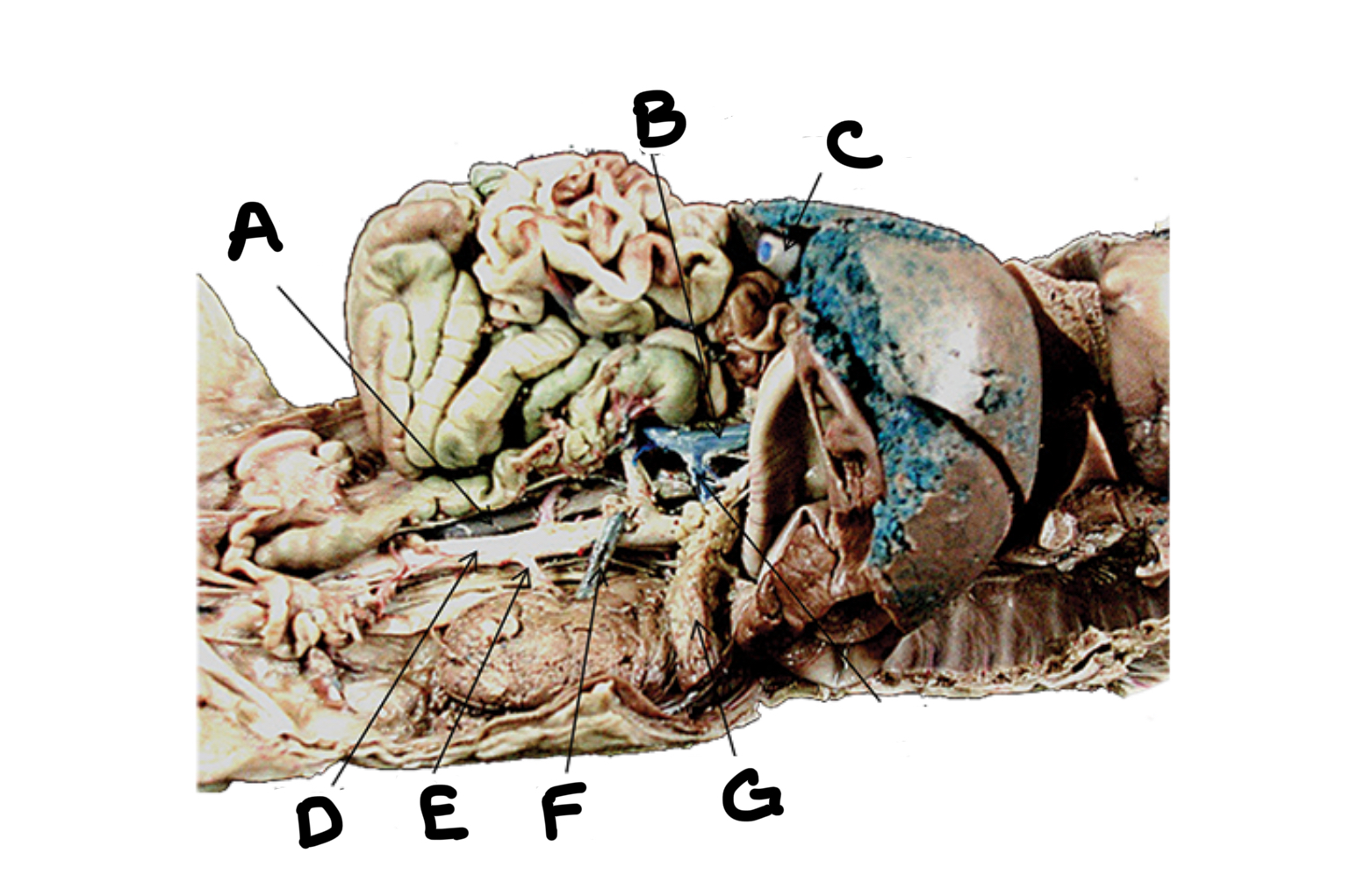
Pancreas
What is G

Pancreatic
What is H

Common carotid arteries
What is A
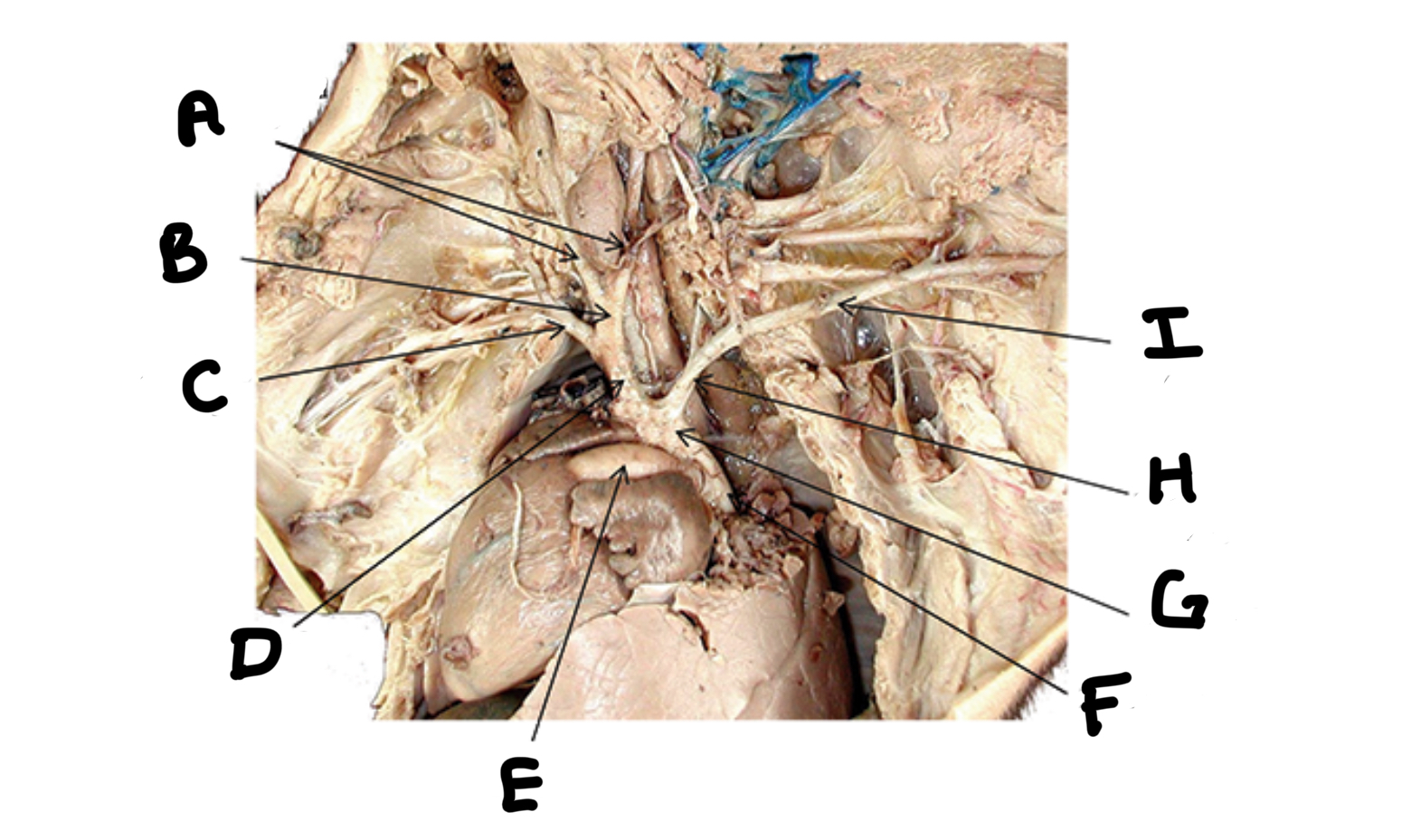
Carotid trunk
What is B
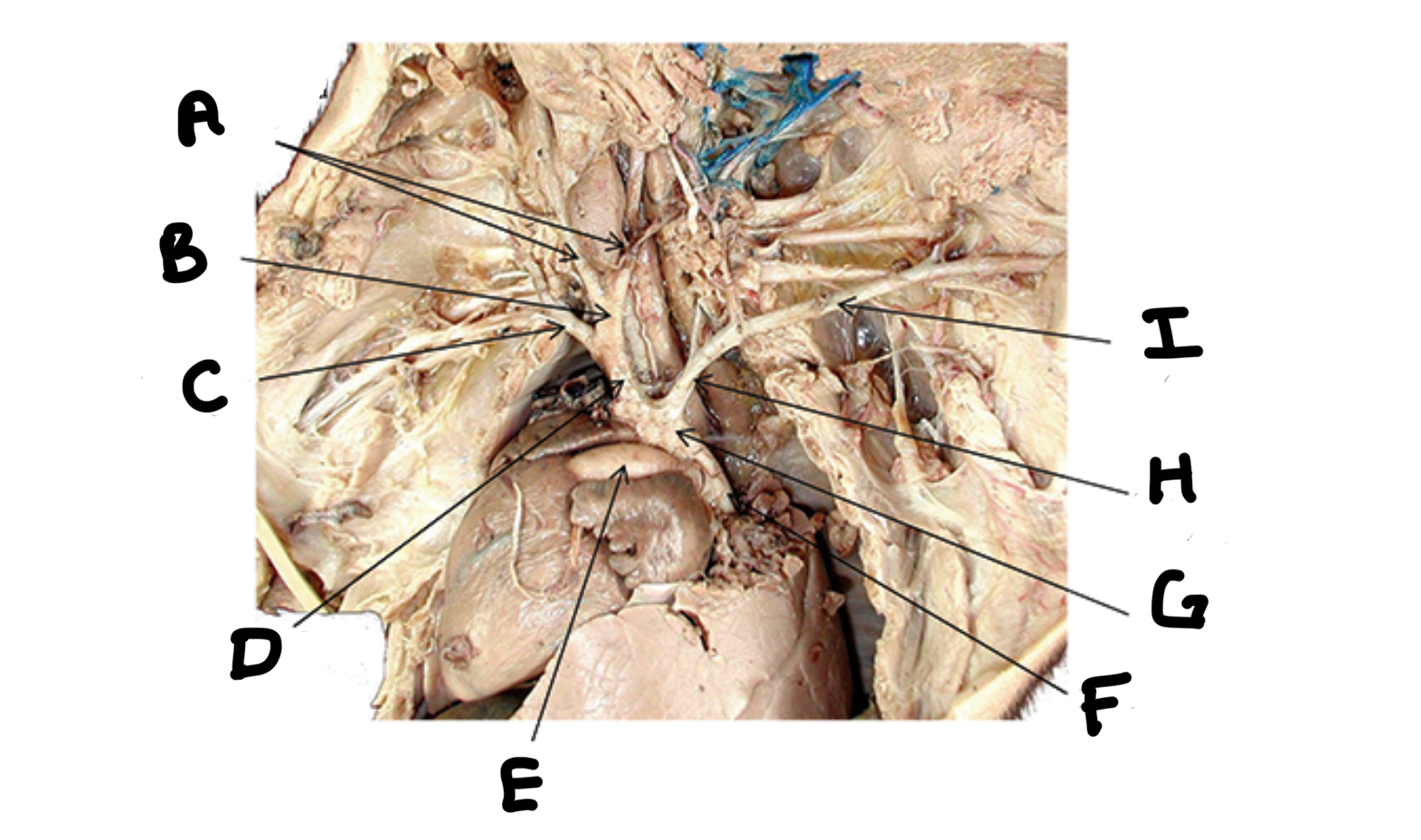
Right subclavian artery
What is C

Brachiocephalic trunk
What is D

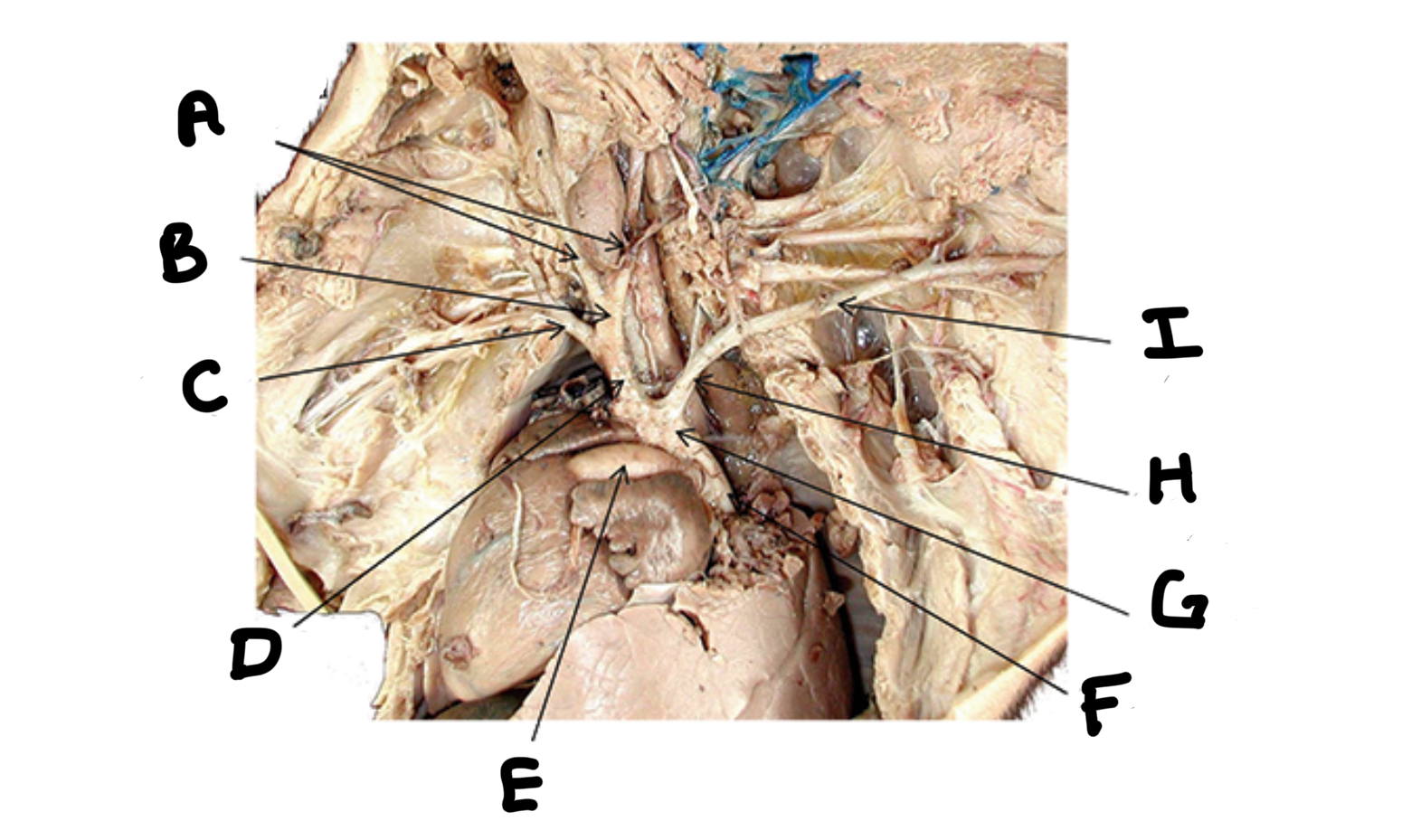
Dorsal aorta
What is F
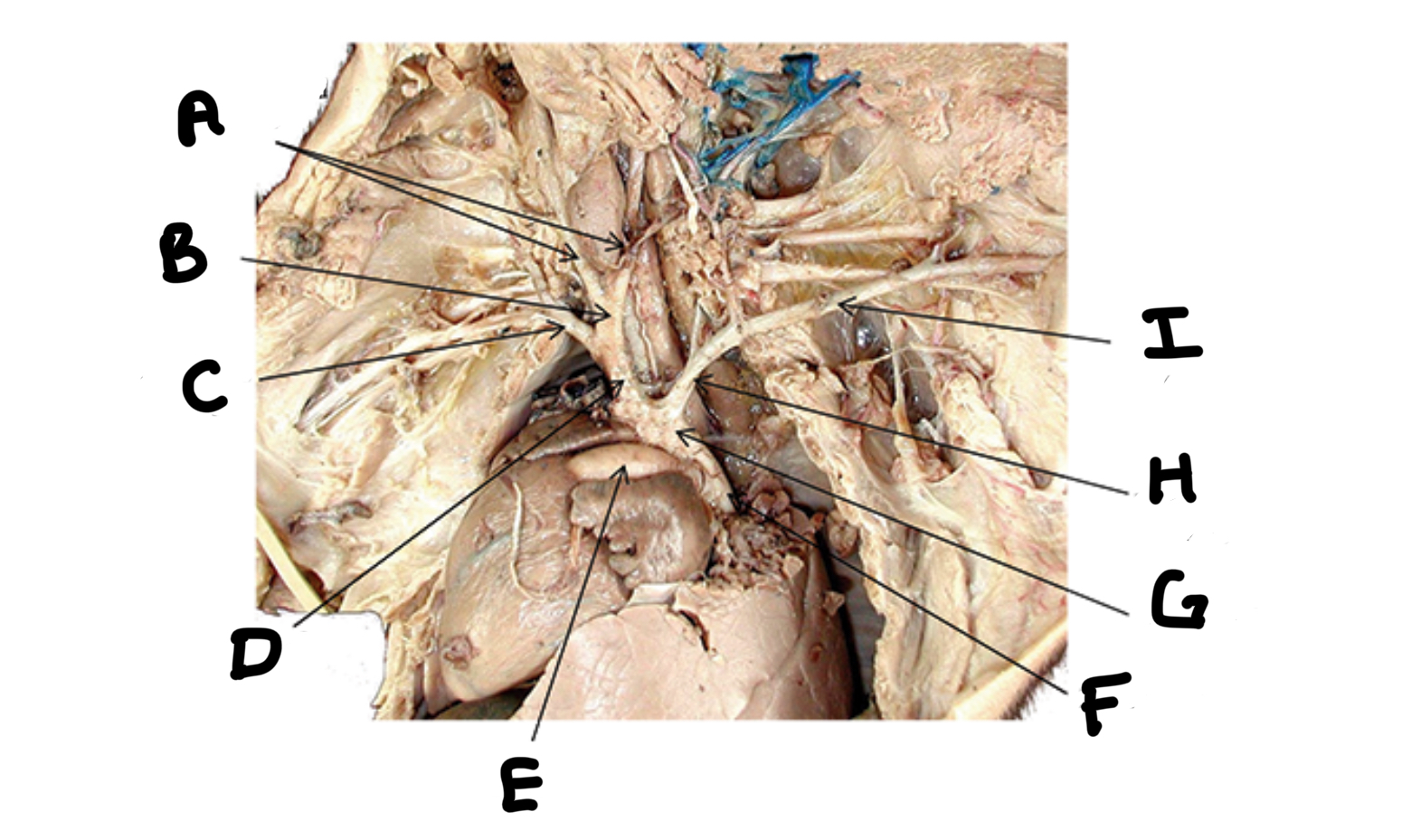
Aortic arch
What is G
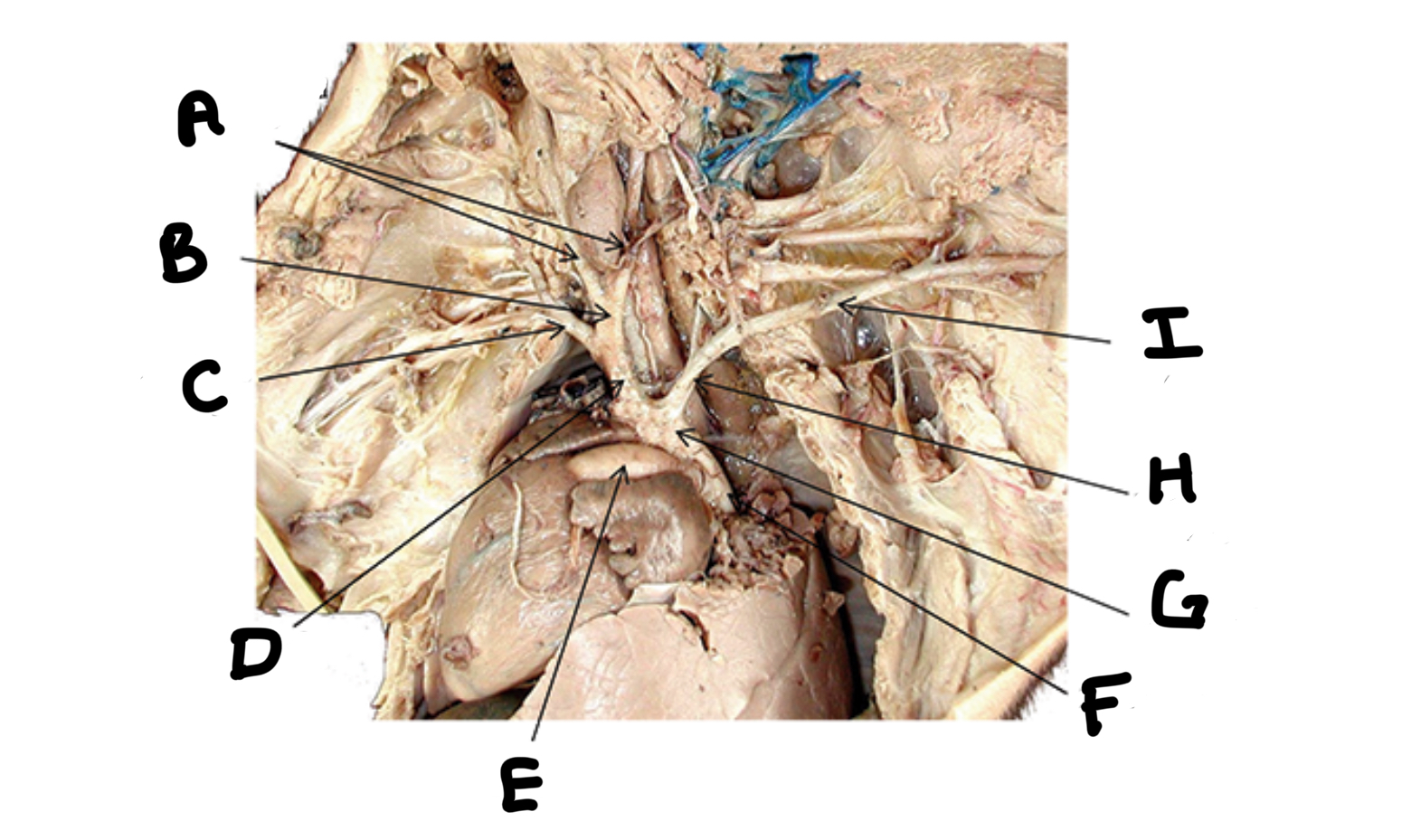
Left subclavian artery
What is H

Axillary artery
What is I
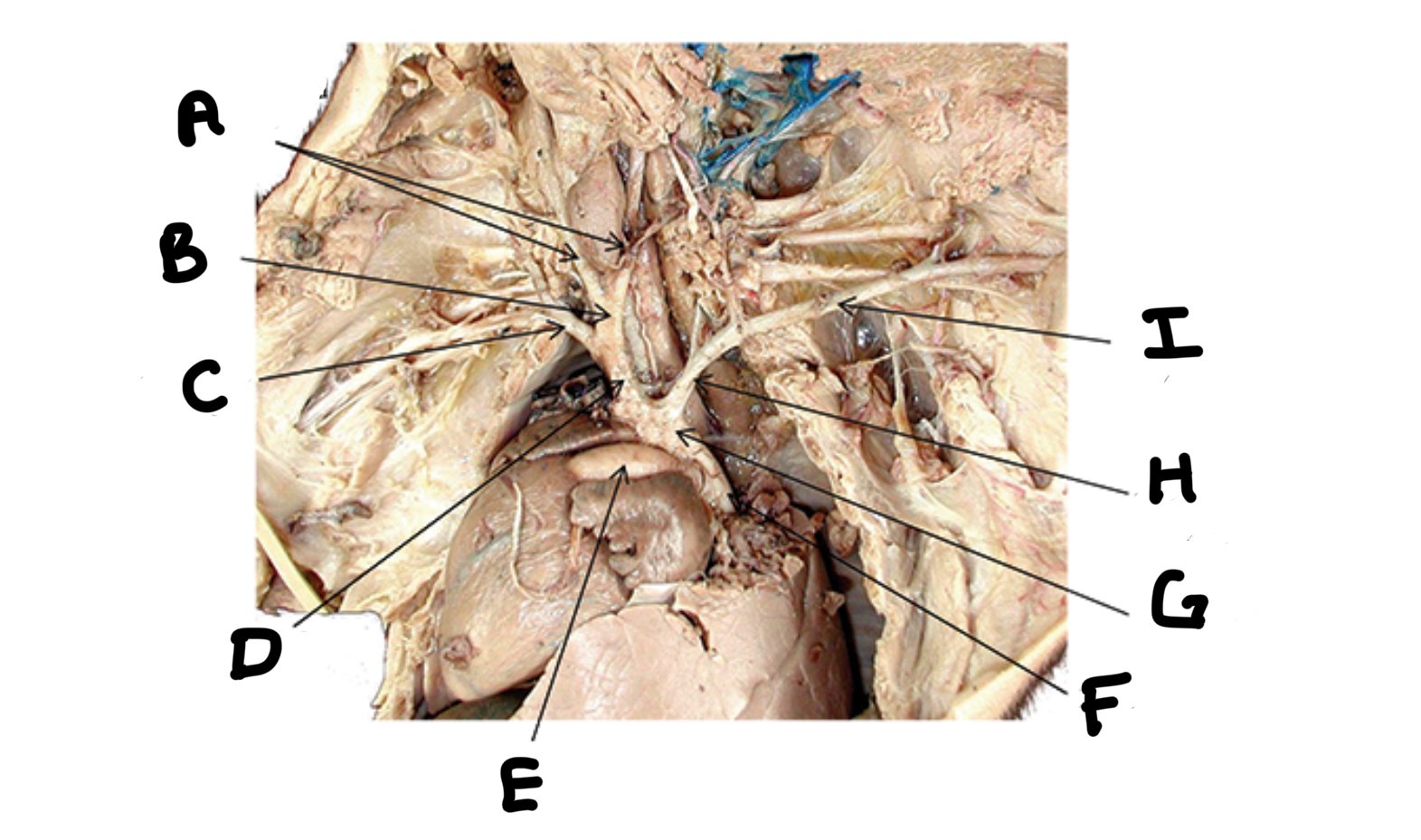
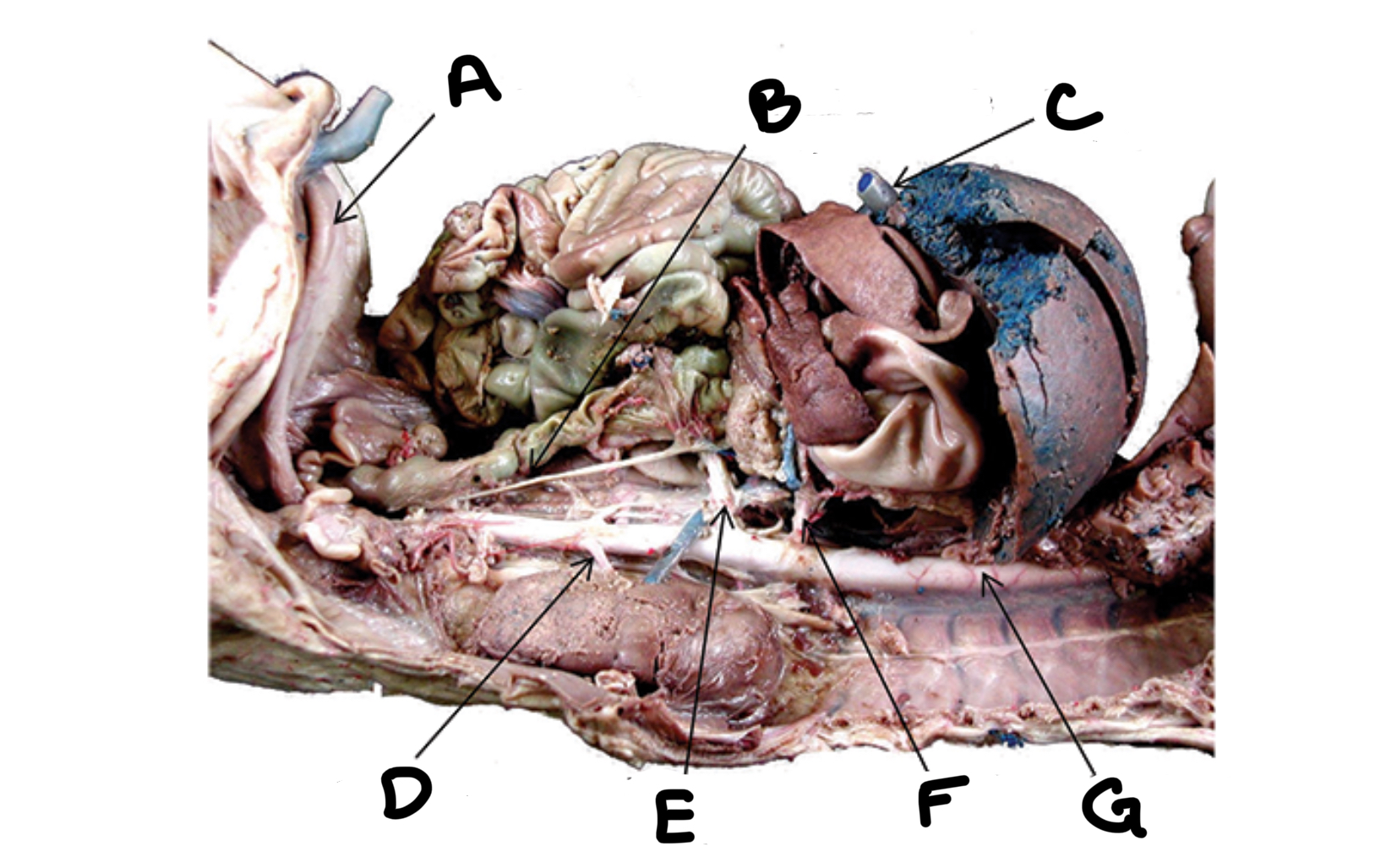
Caudal mesenteric artery
What is B

Umbilical vein
What is C
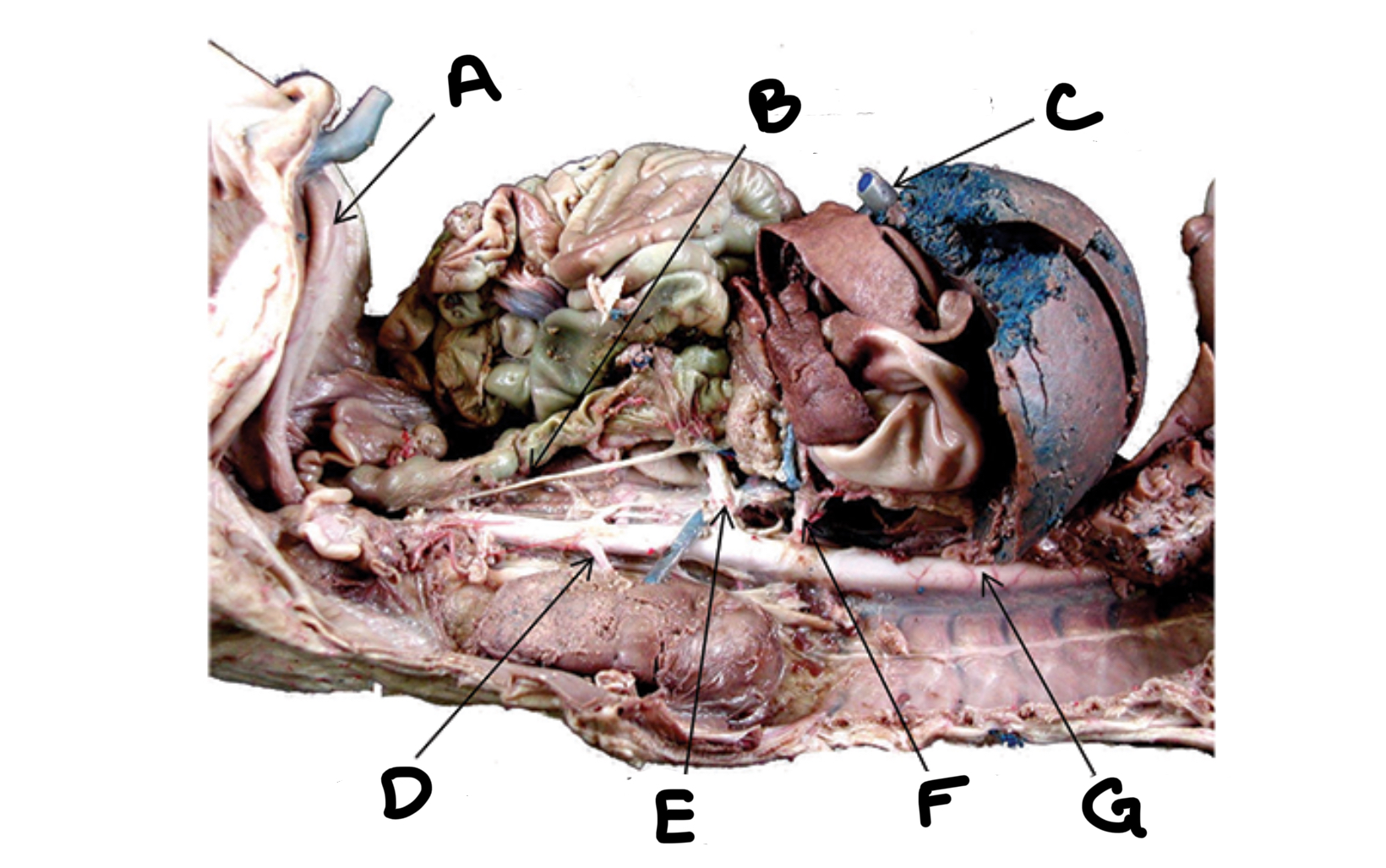
Renal artery
What is D
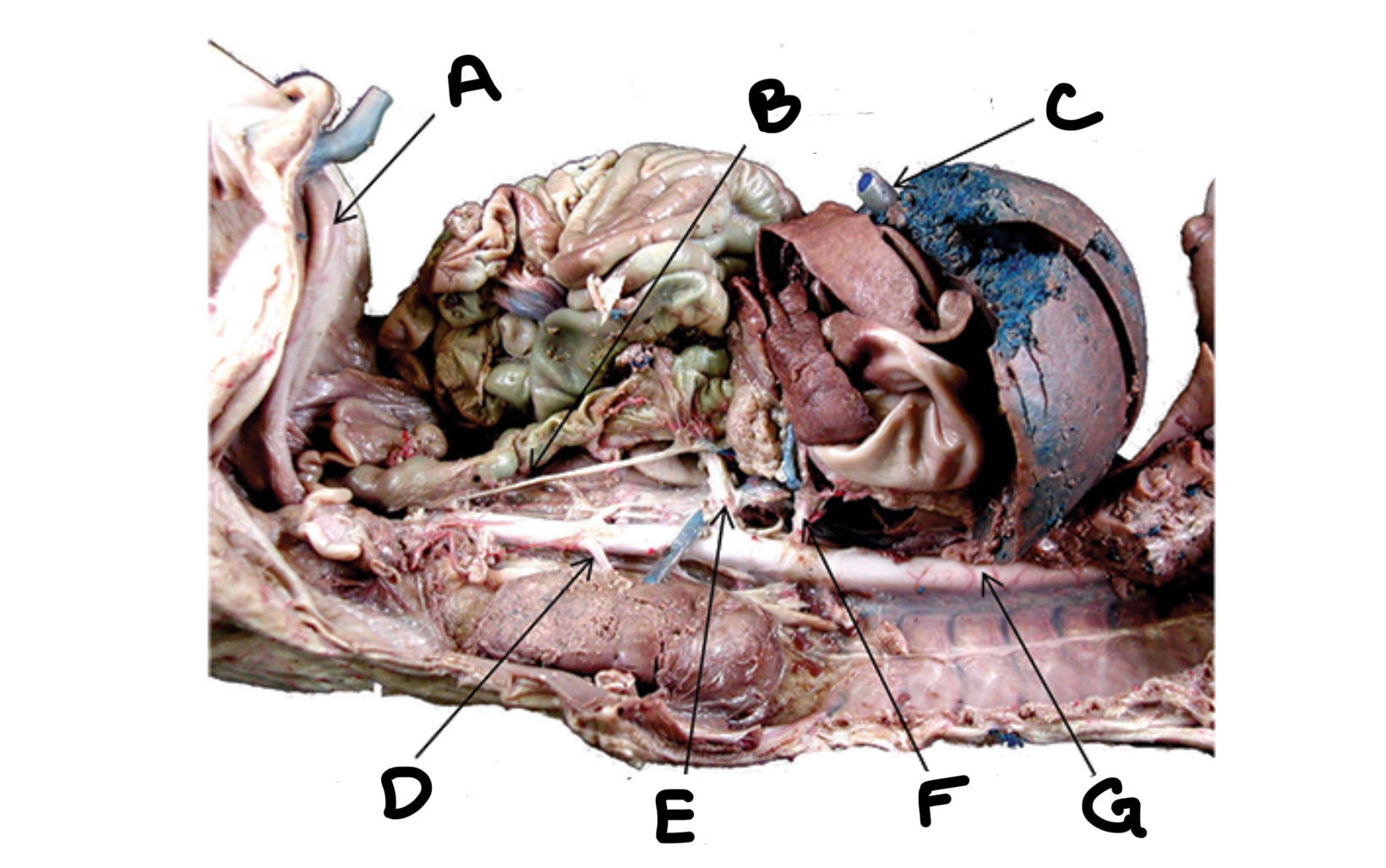
Cranial mesenteric artery
What is E
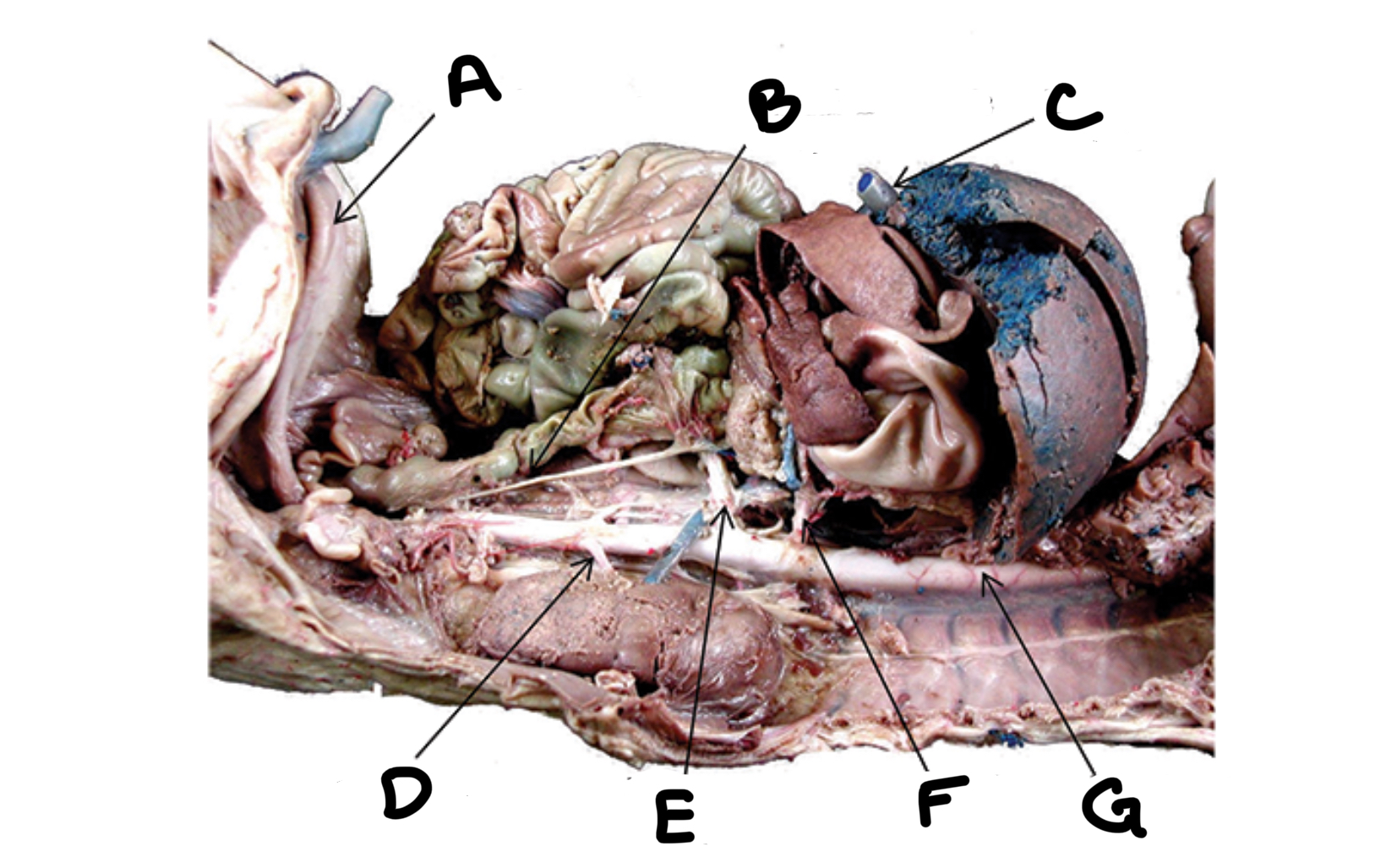
Celiac trunk
What is F
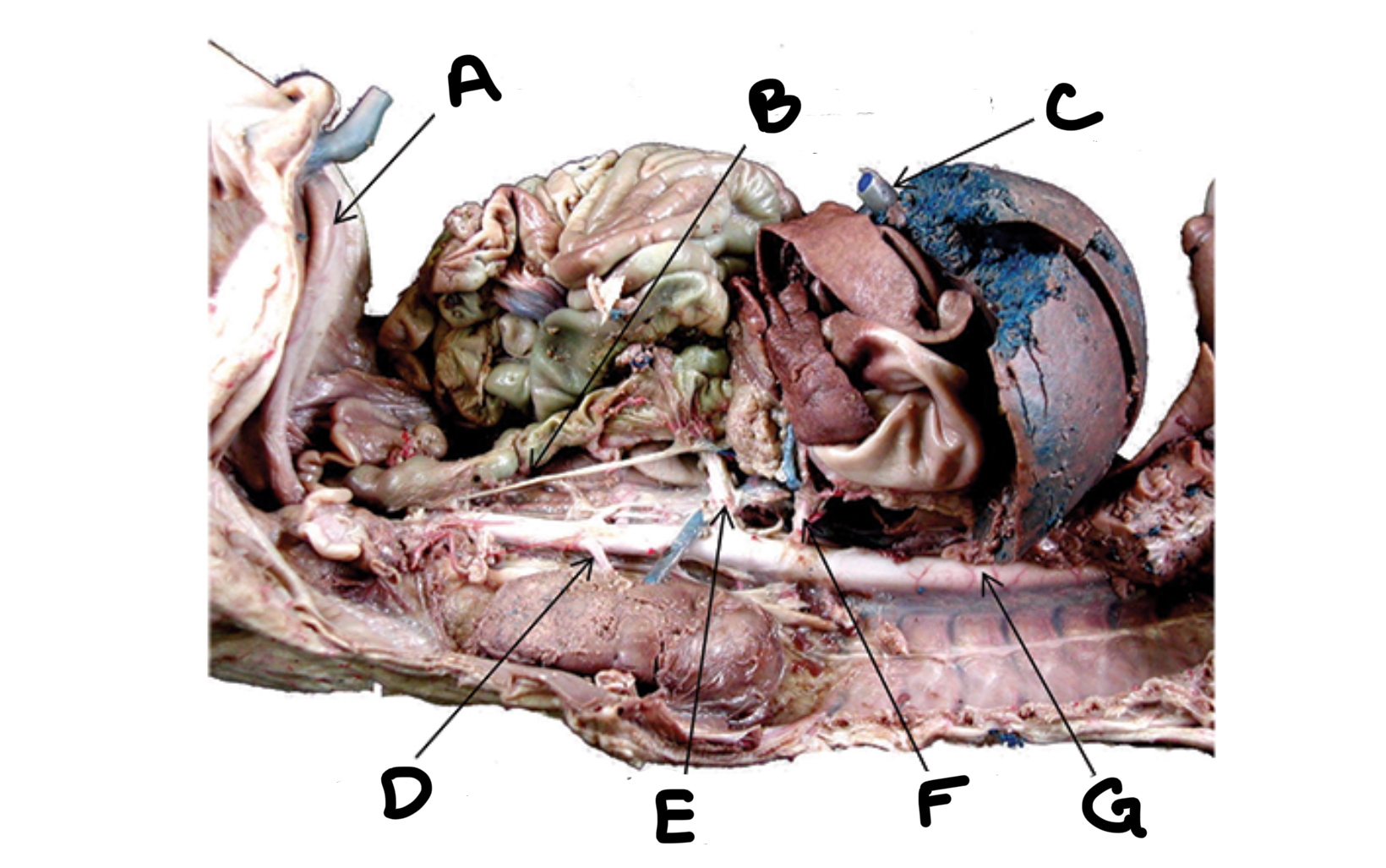
Dorsal aorta
What is G
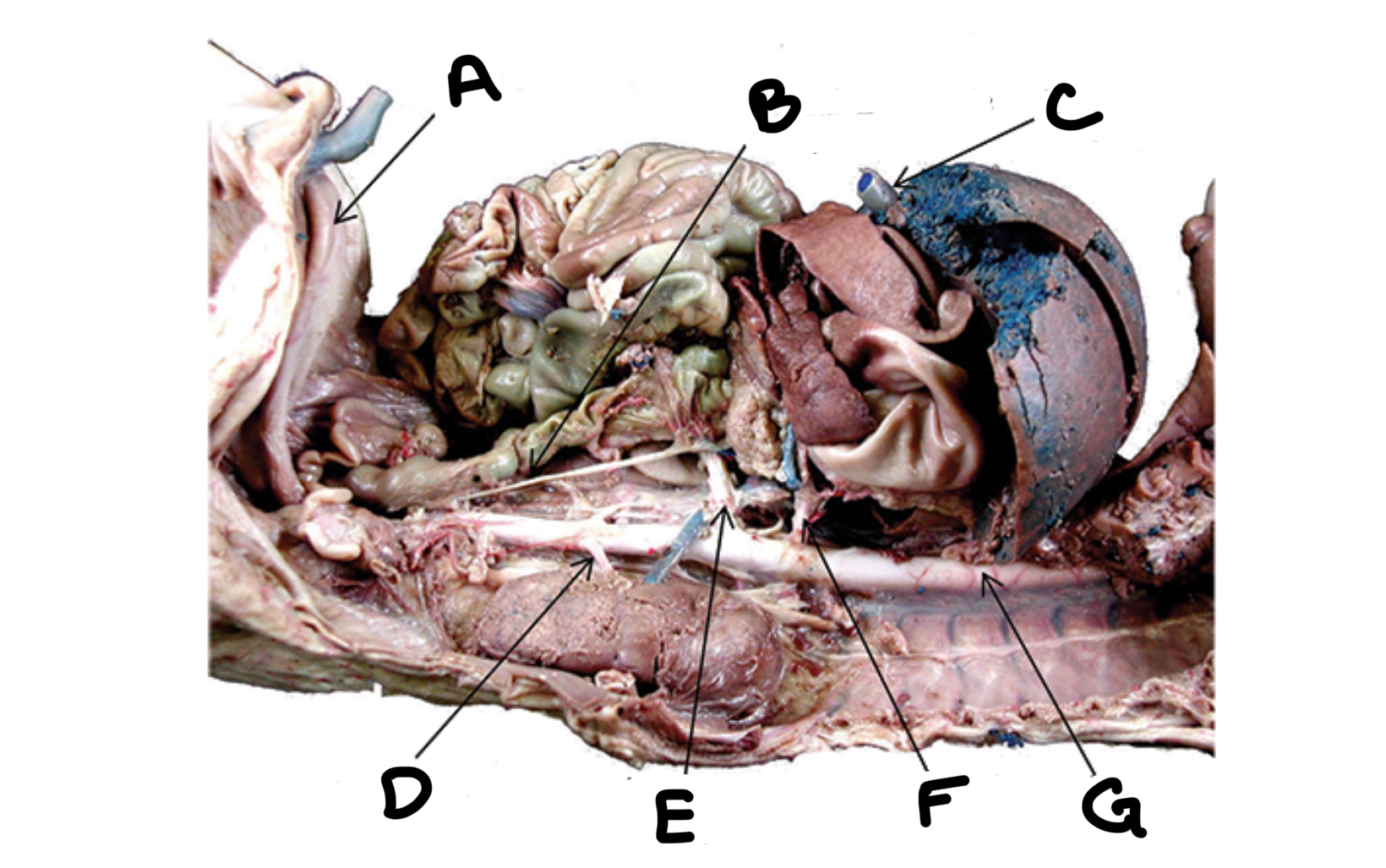
Internal iliac artery
What is A
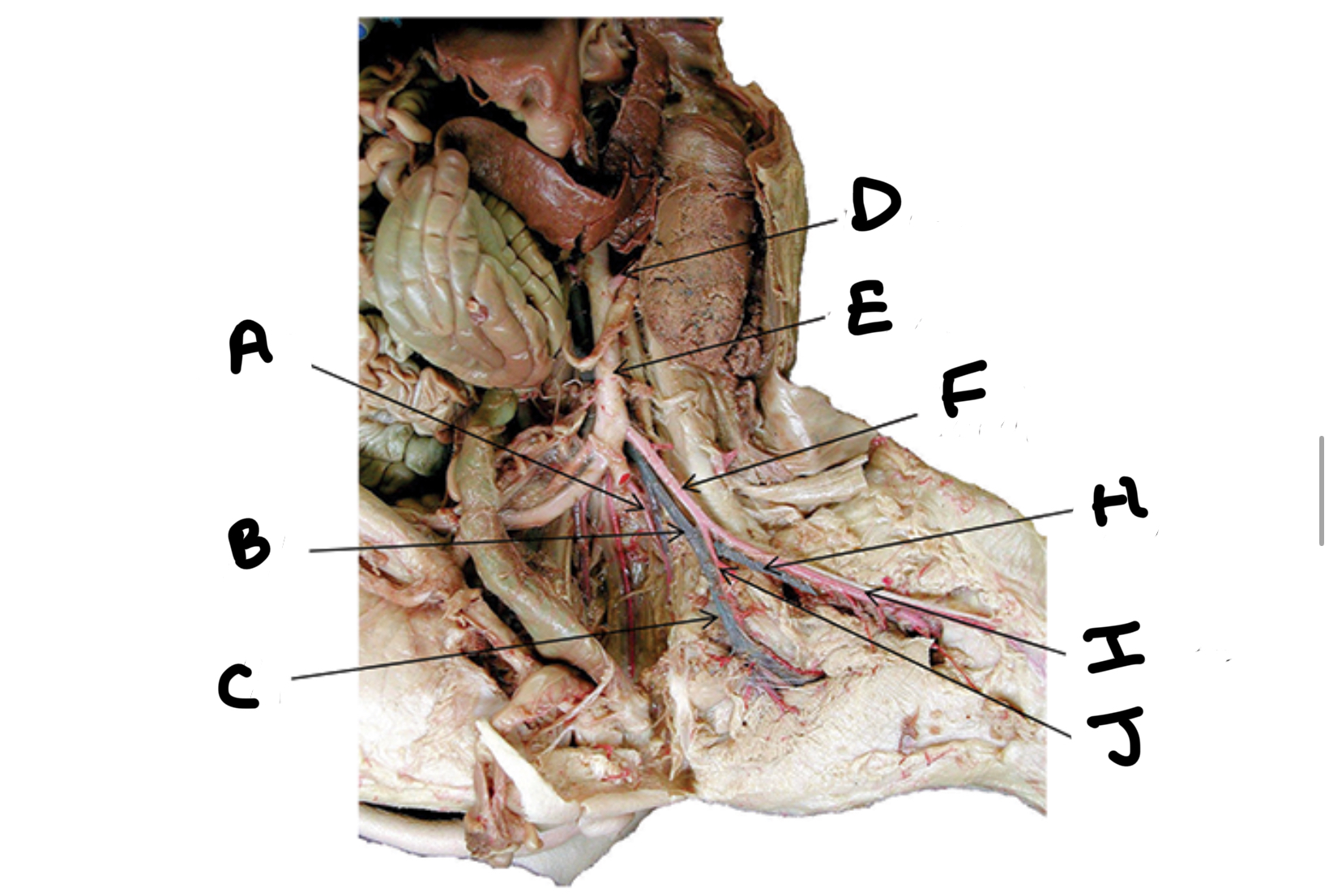
Common iliac artery
What is B
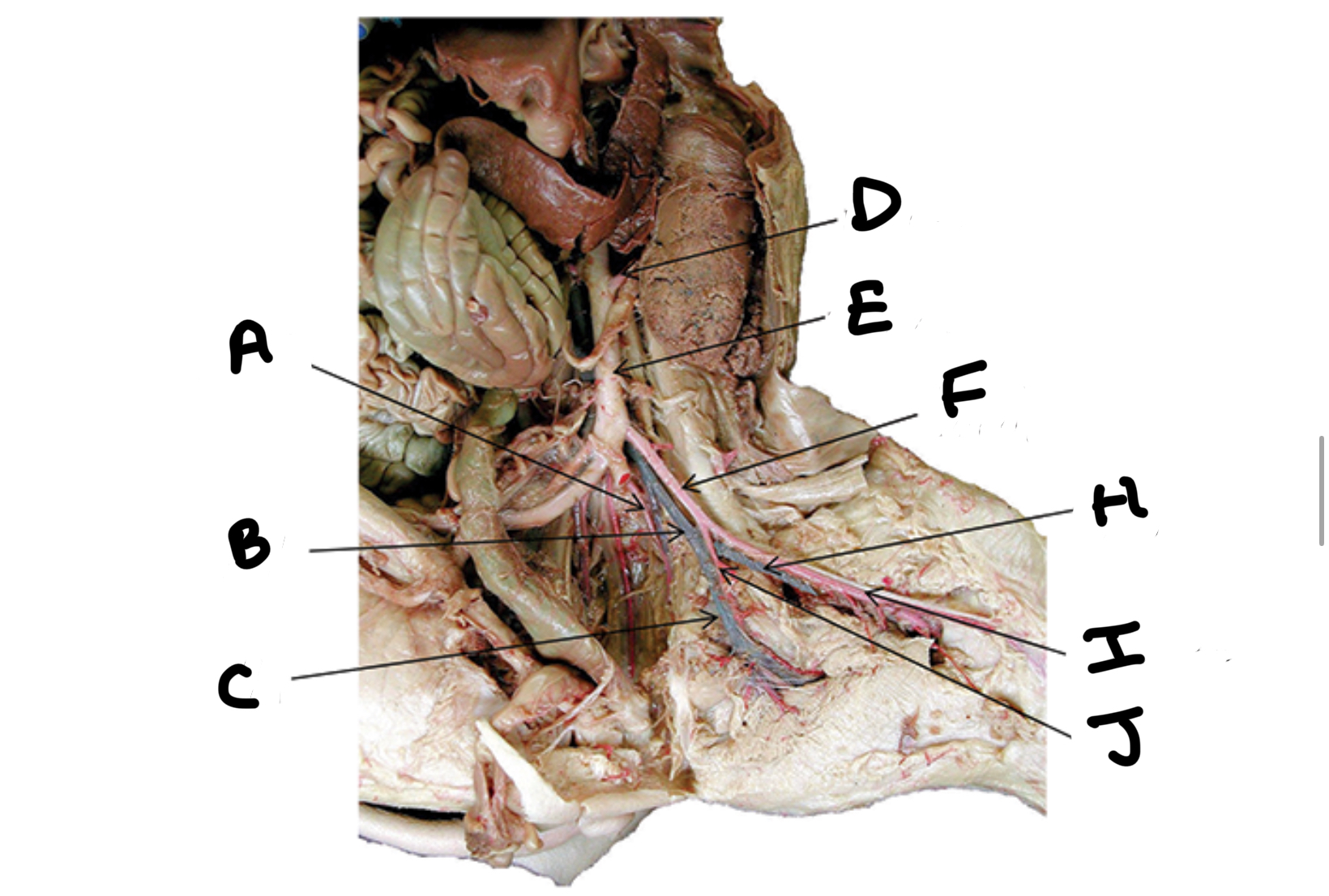
Internal iliac vein
What is C
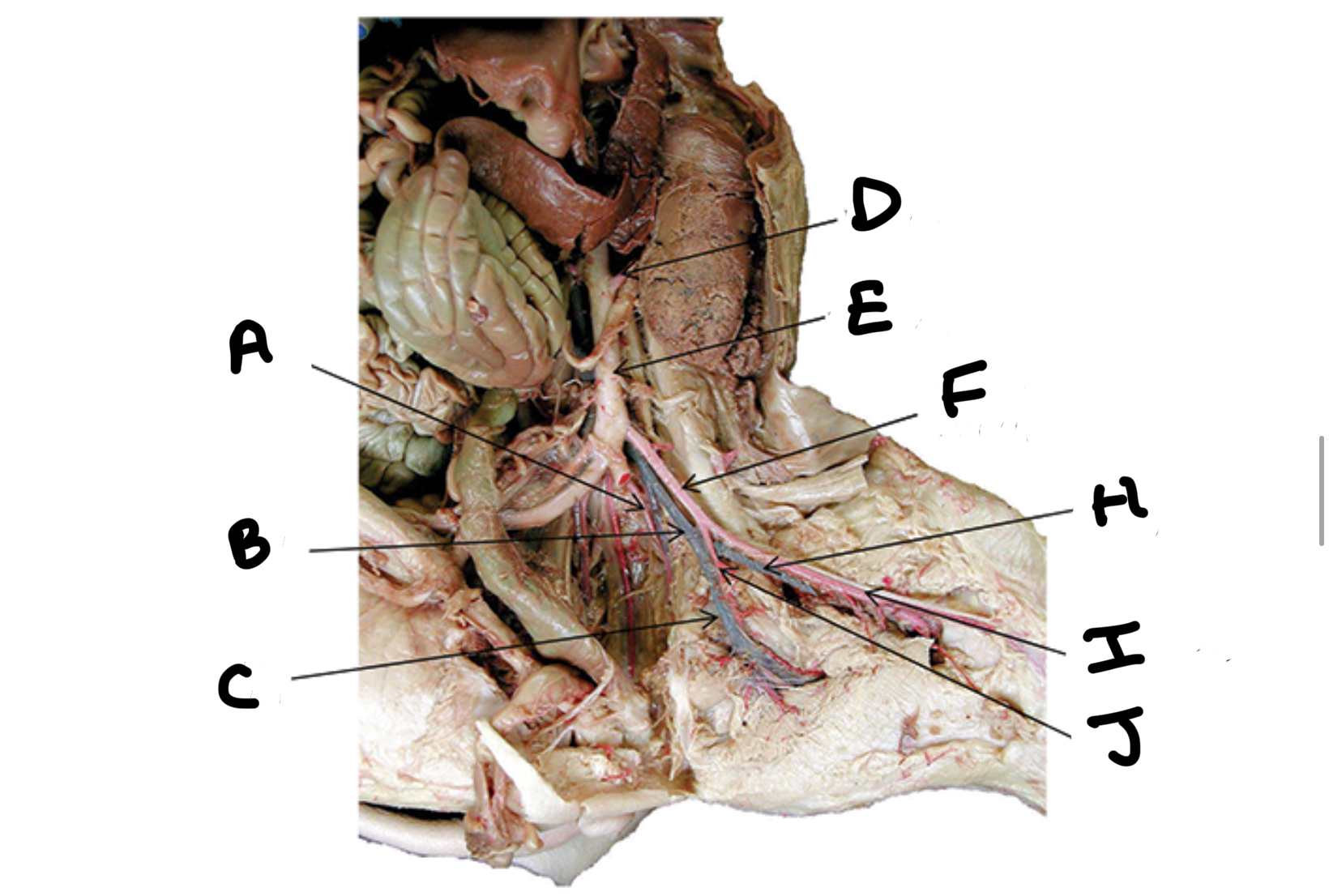
Renal artery
What is D
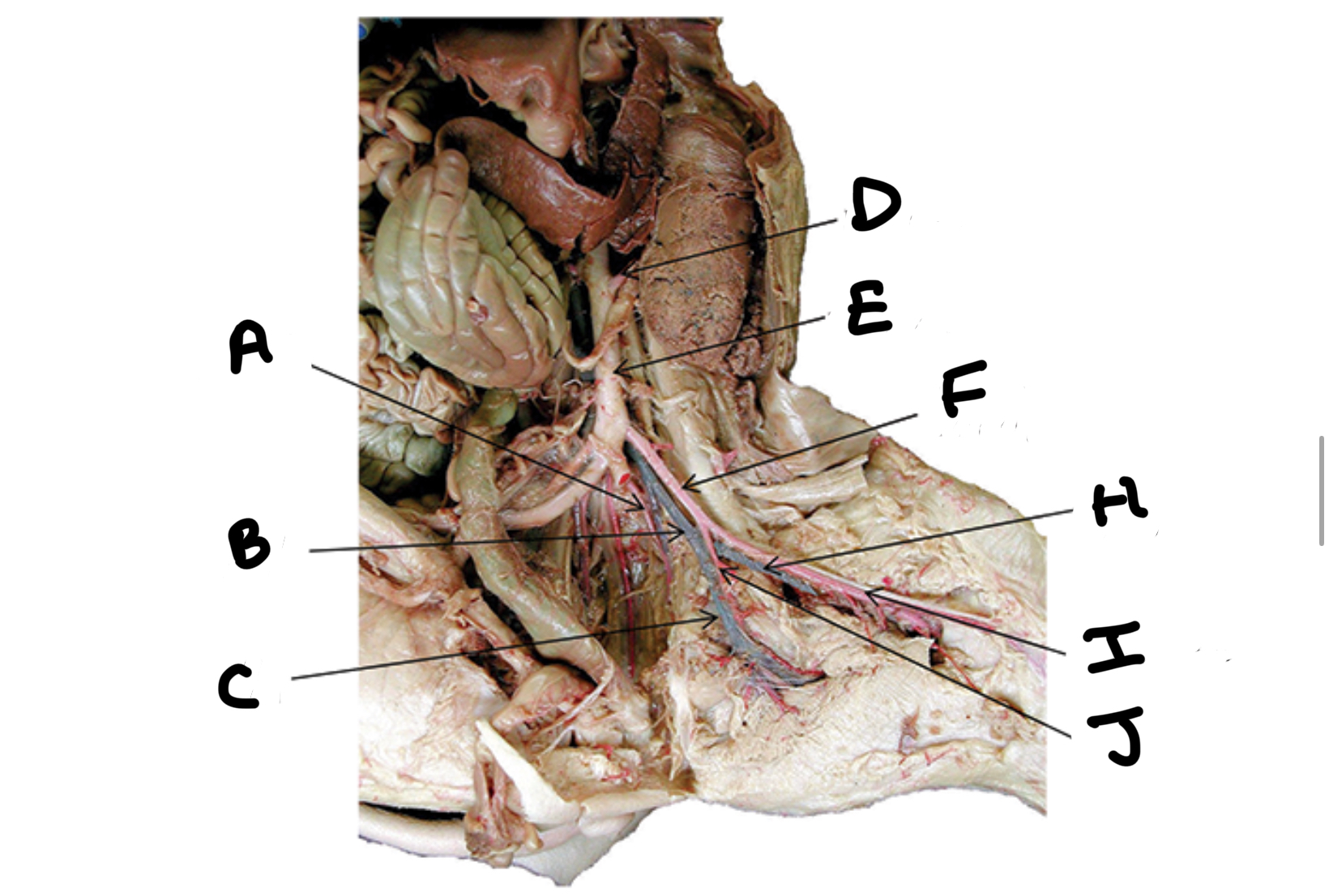
Dorsal aorta
What is E
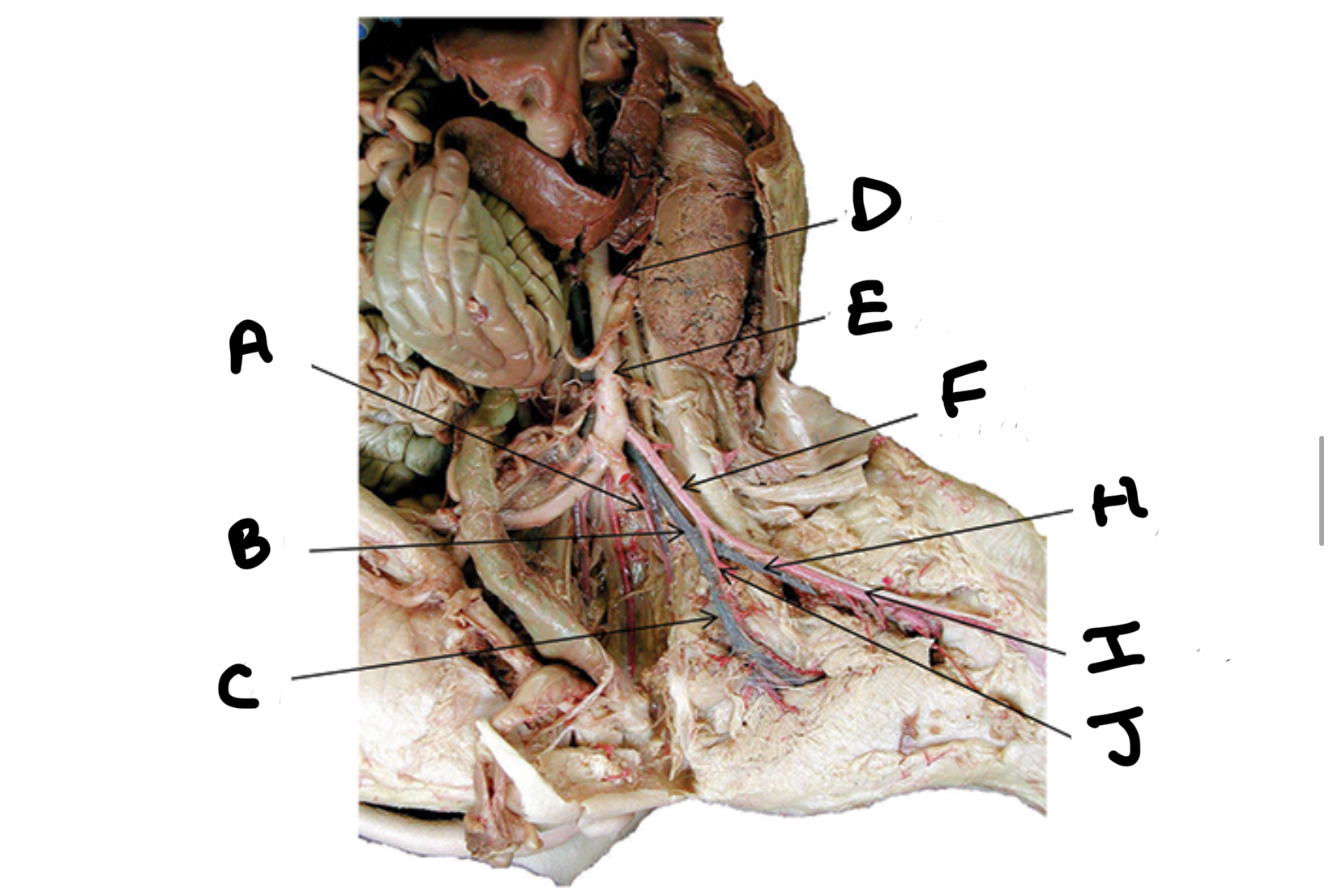
External iliac artery
What is F

External iliac vein
What is G
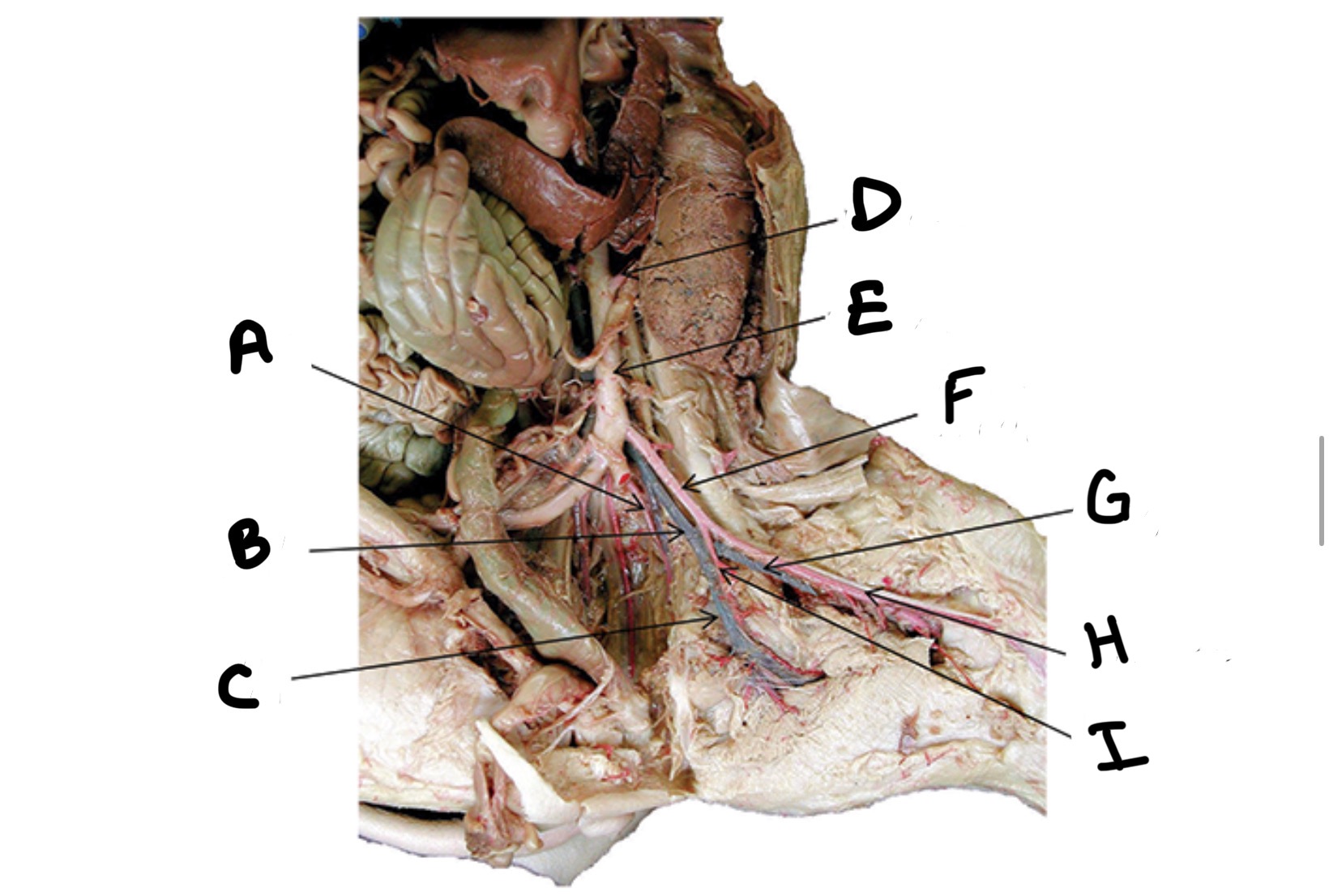
What is H
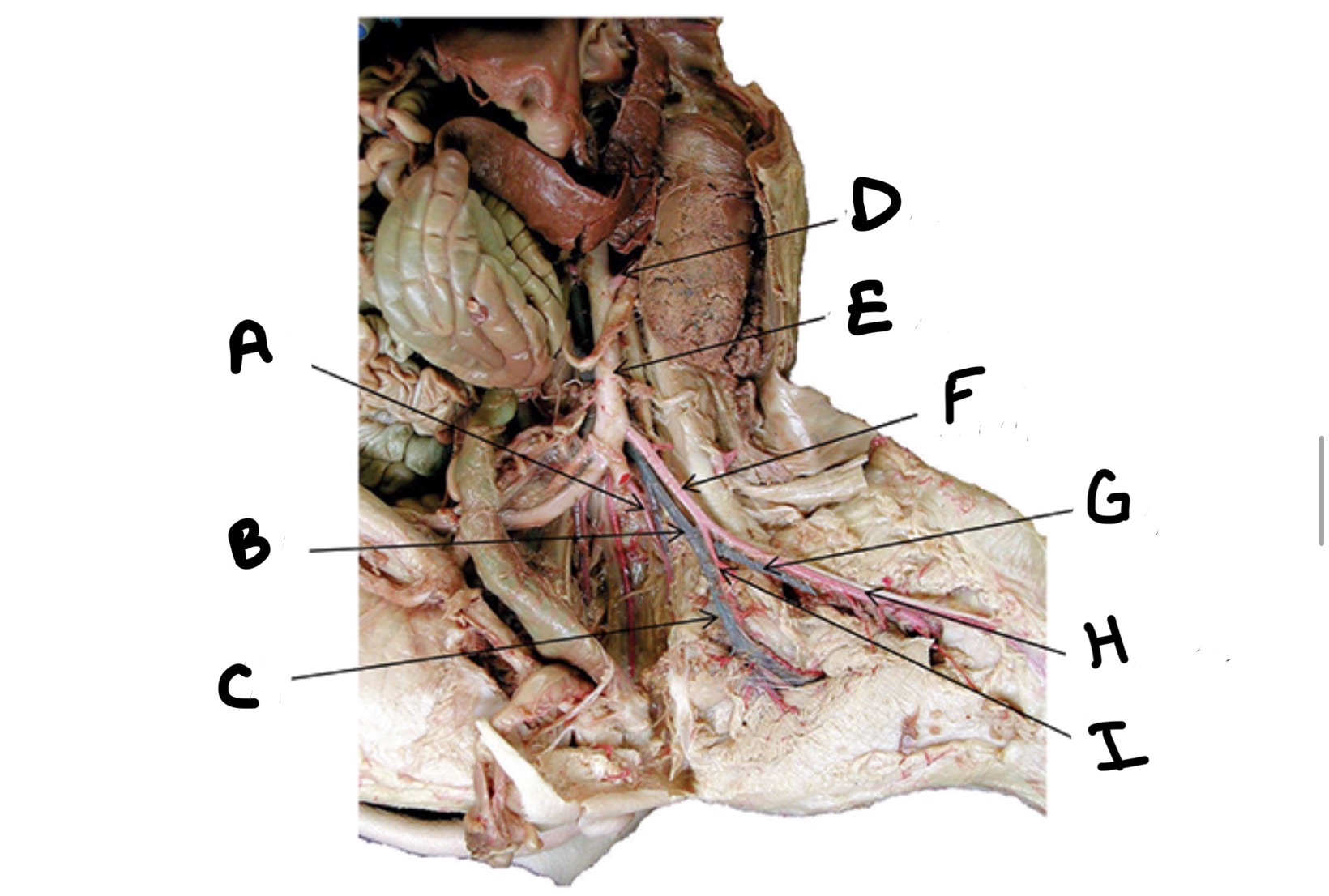
Deep femoral artery
What is I
